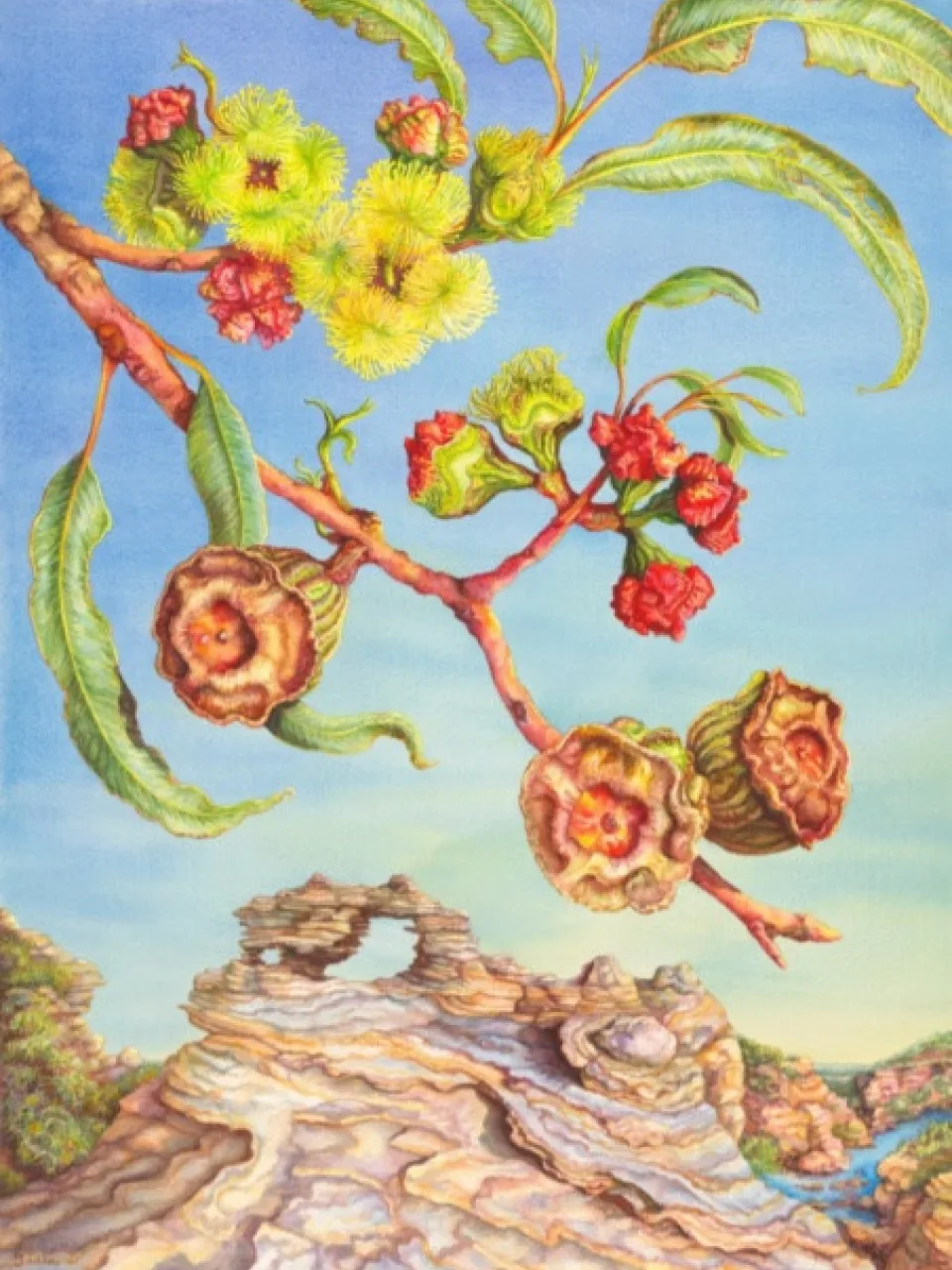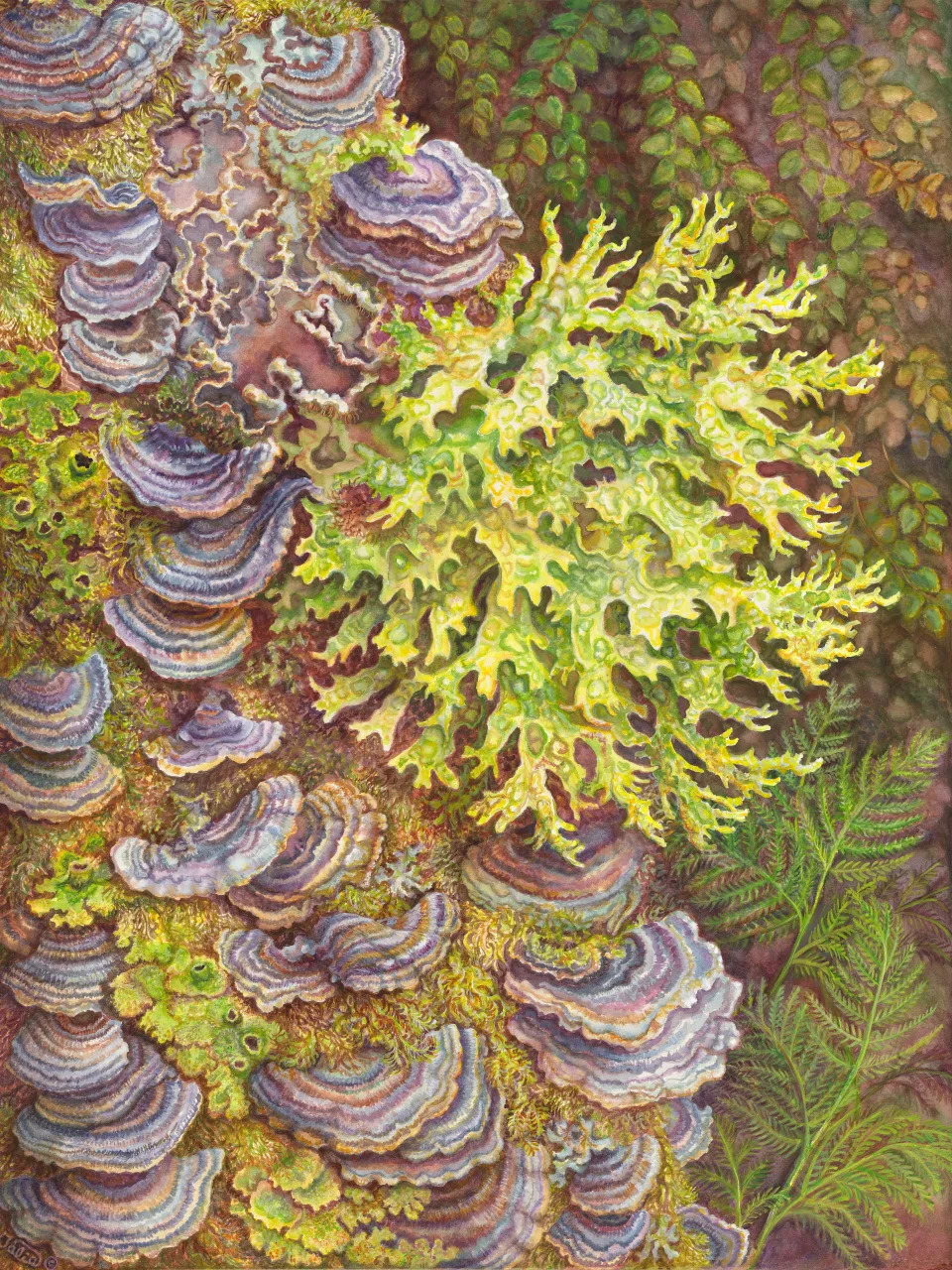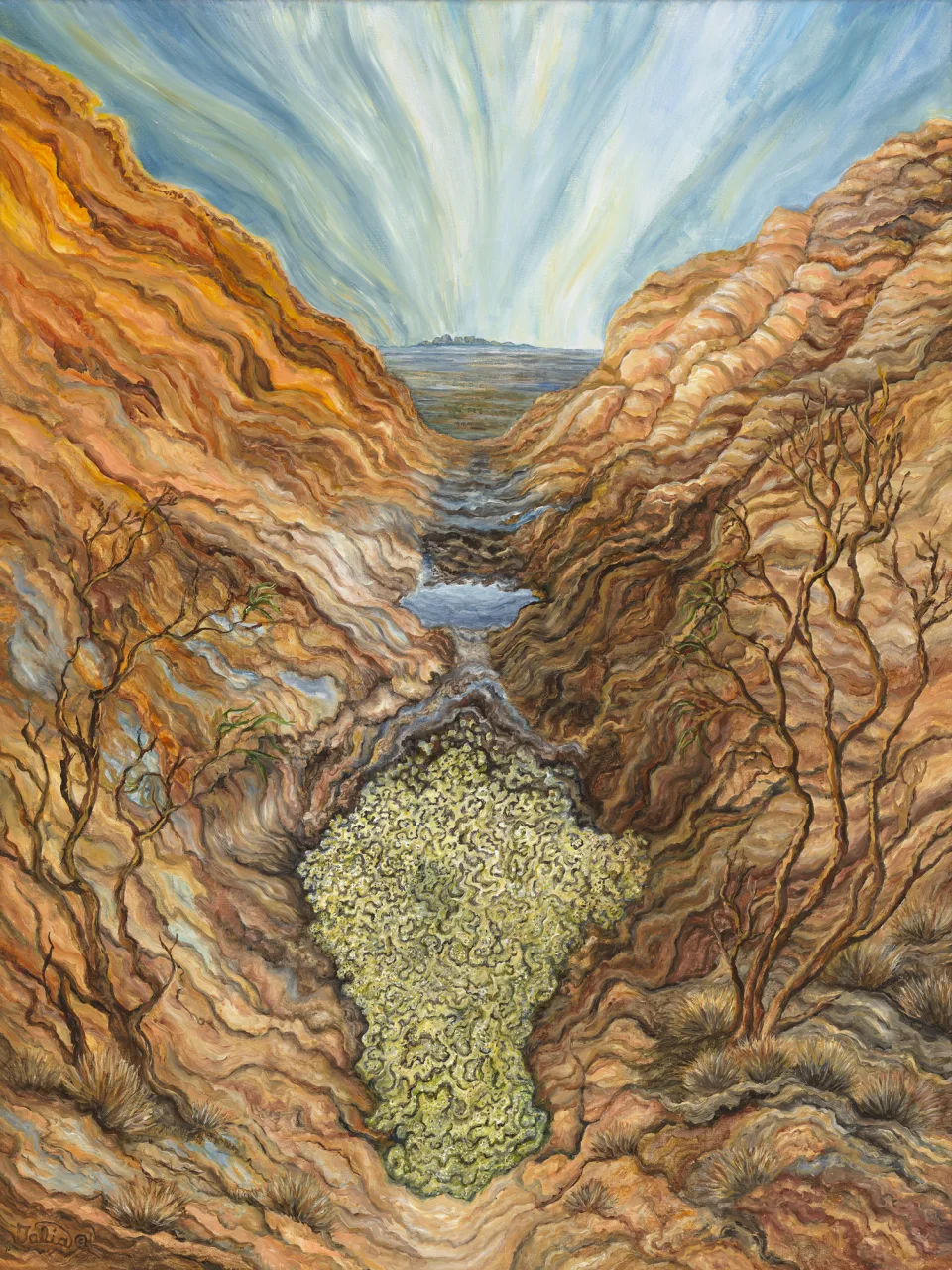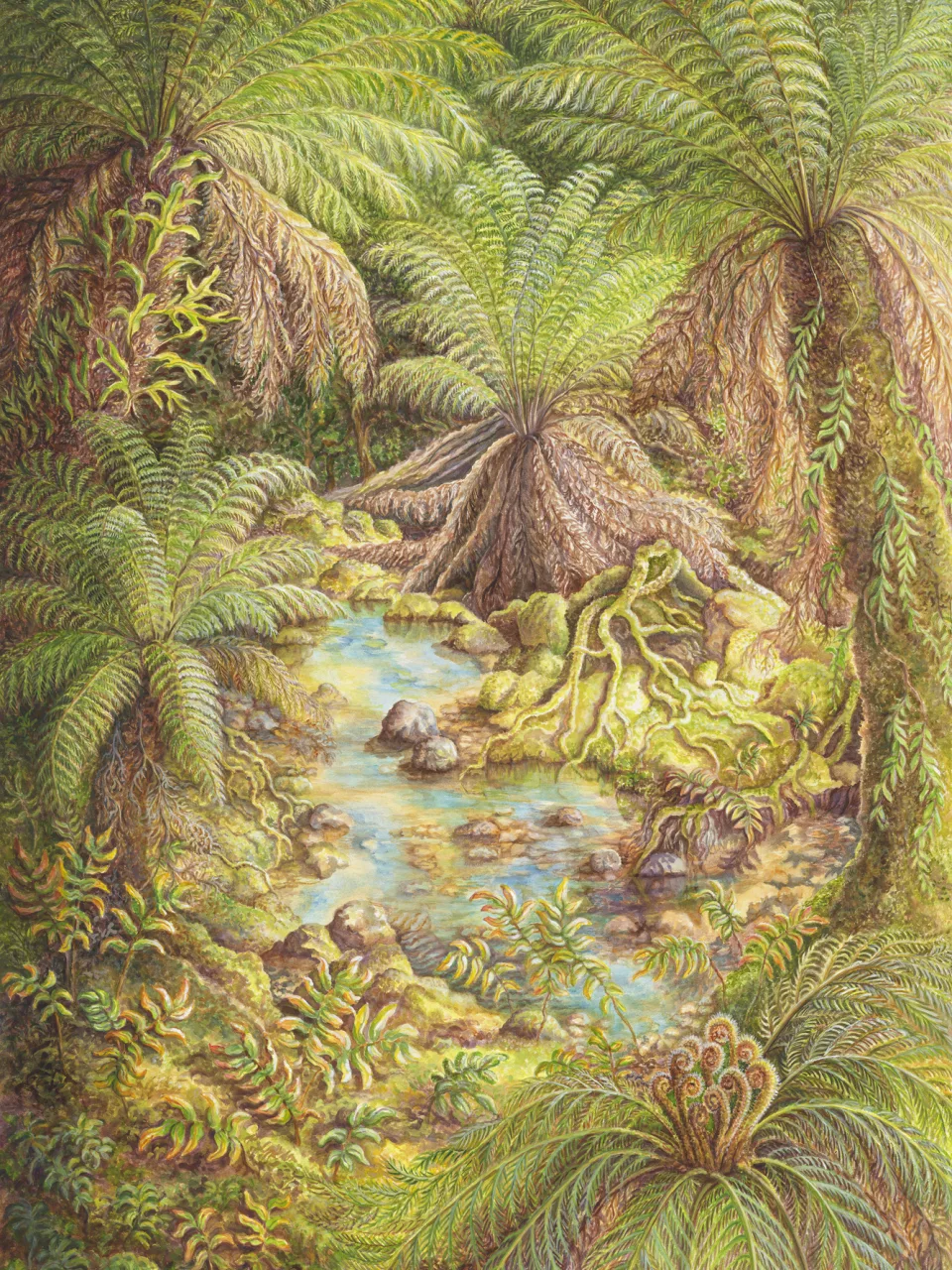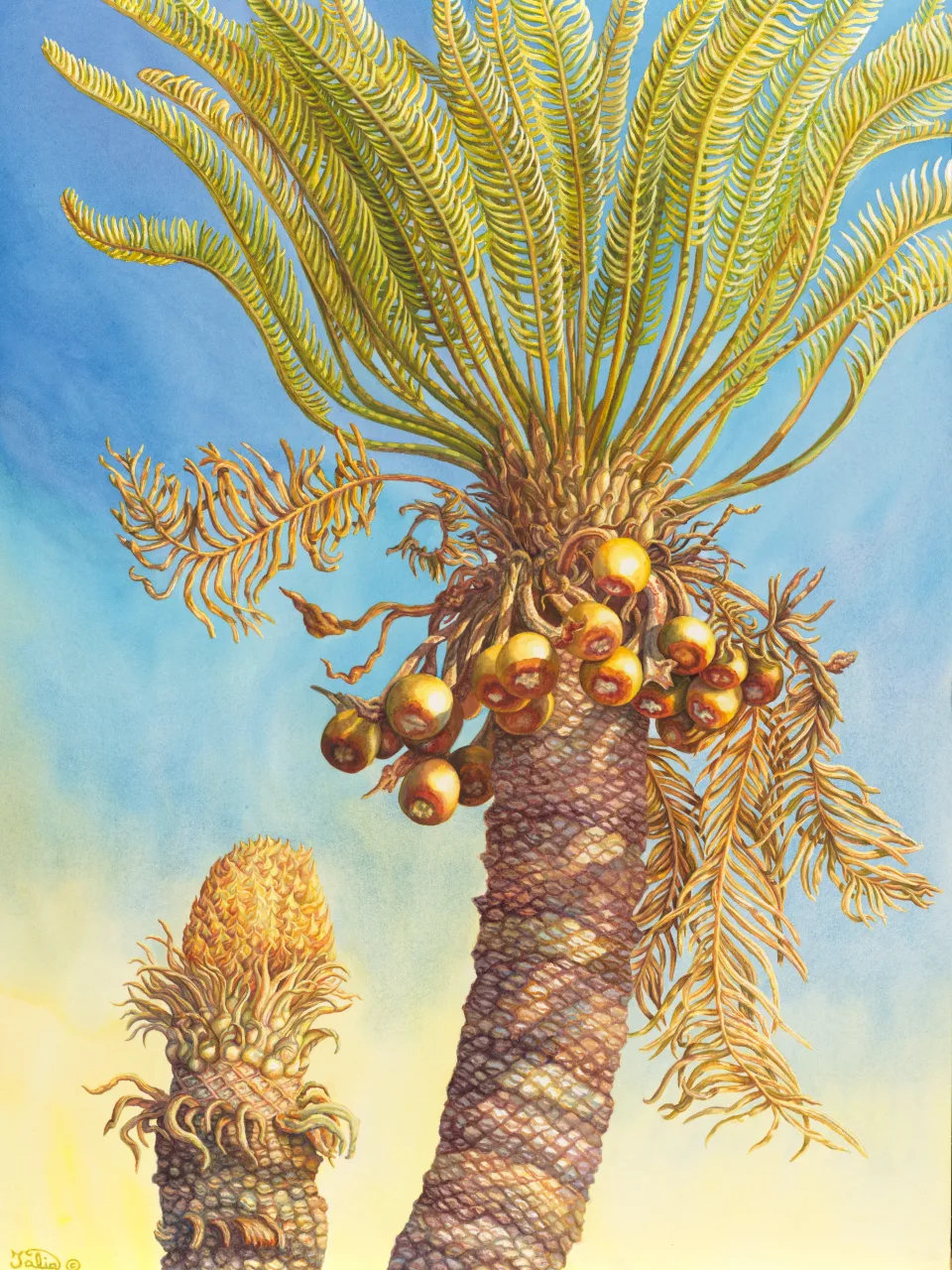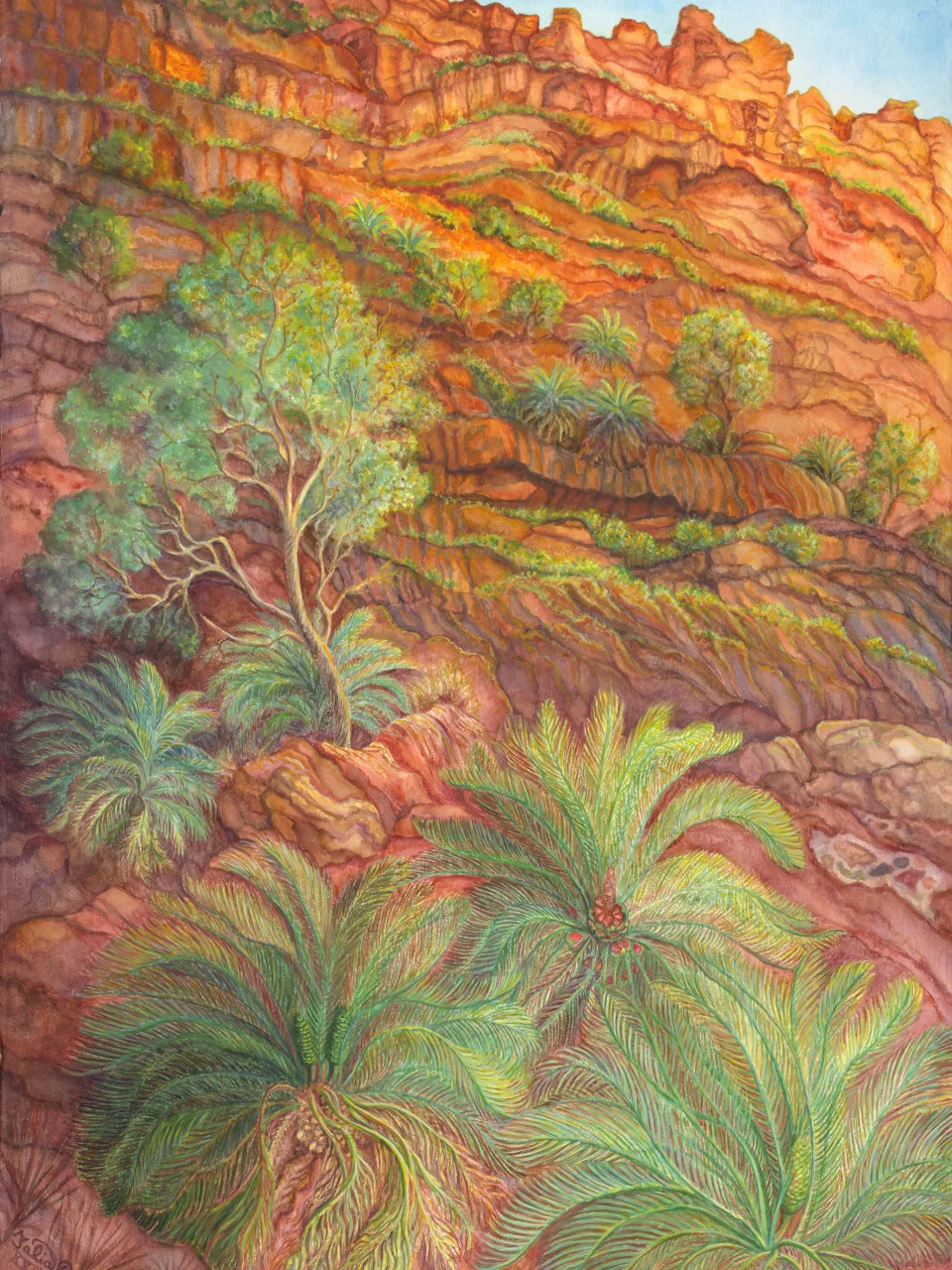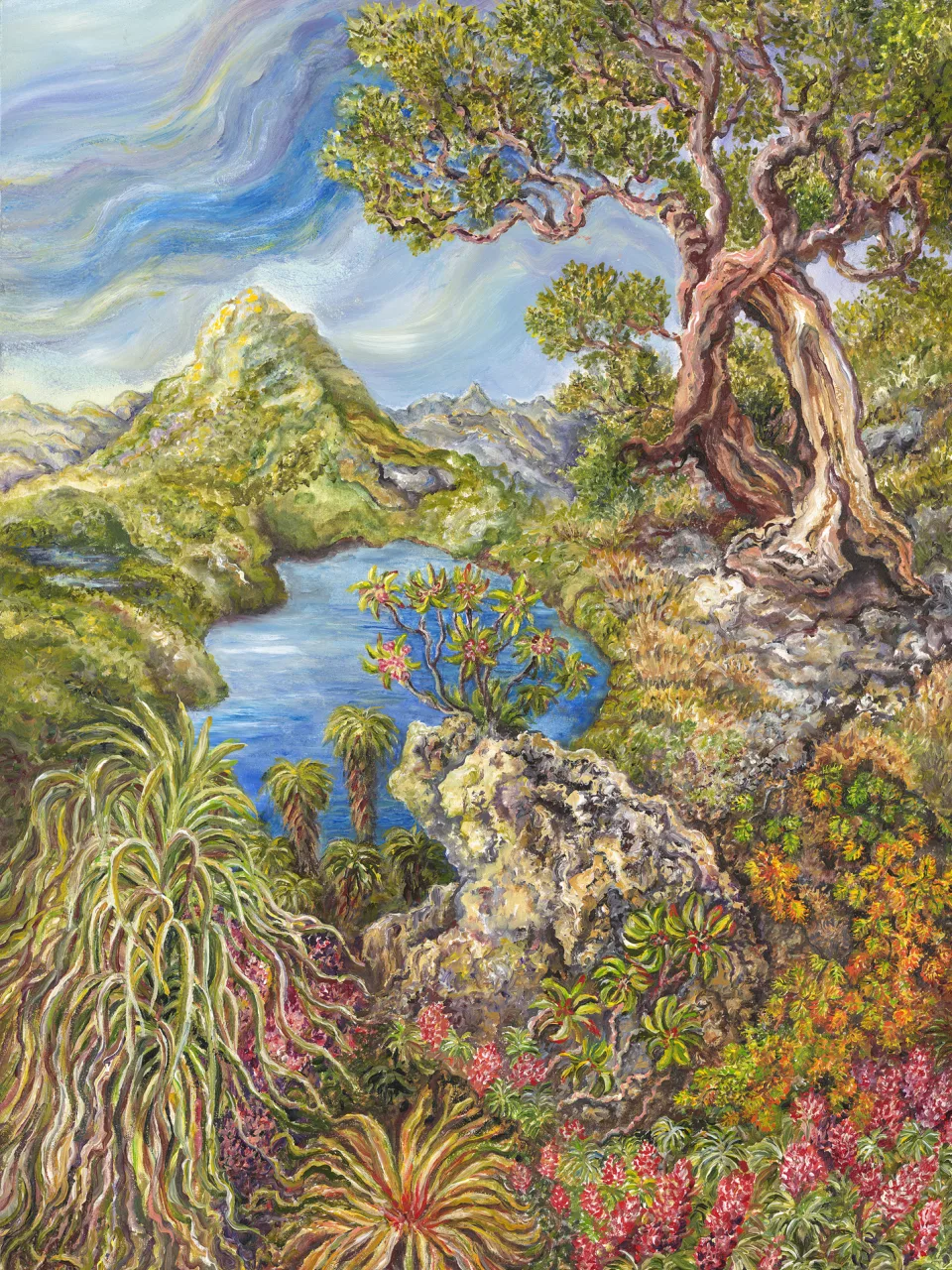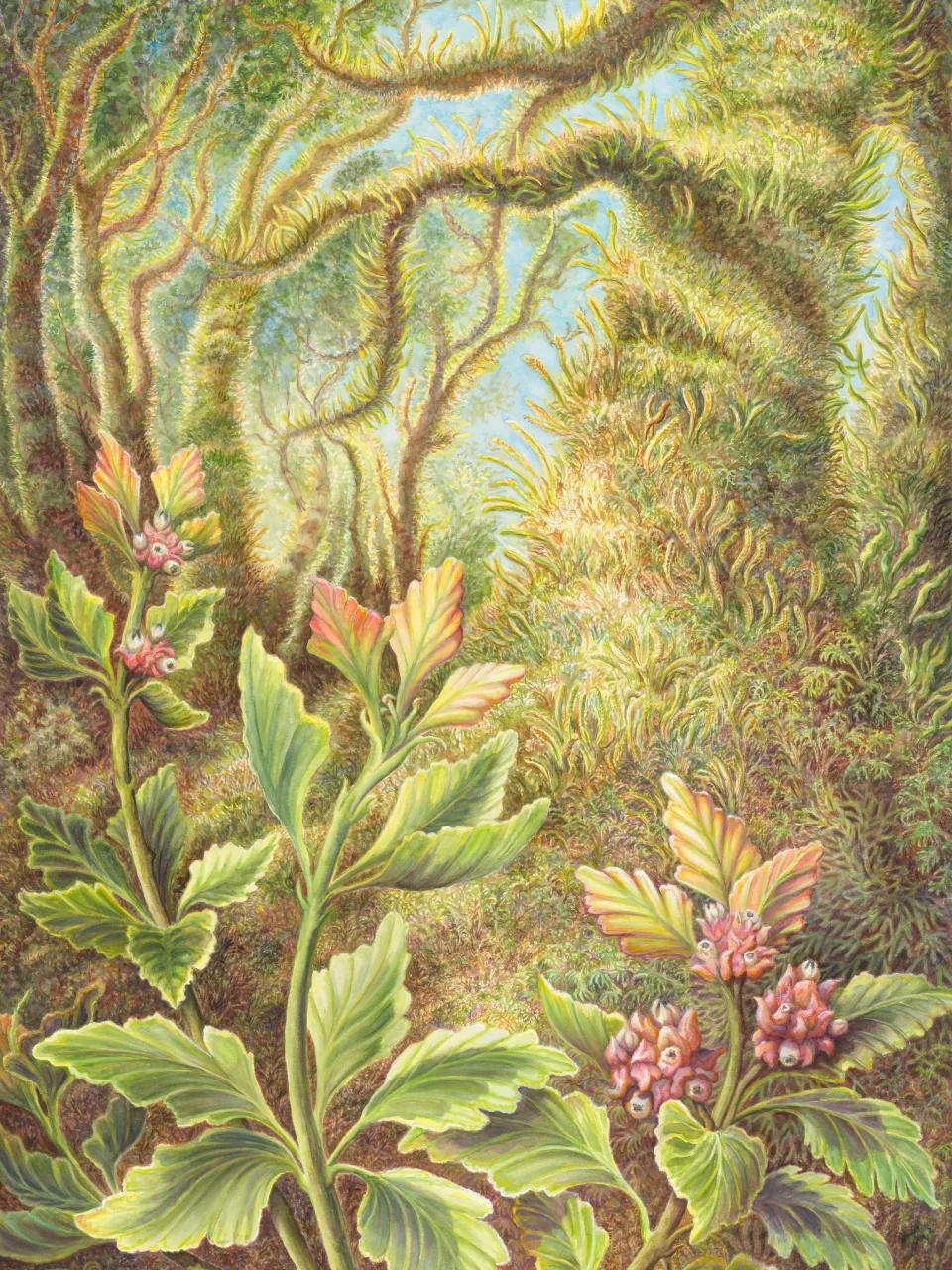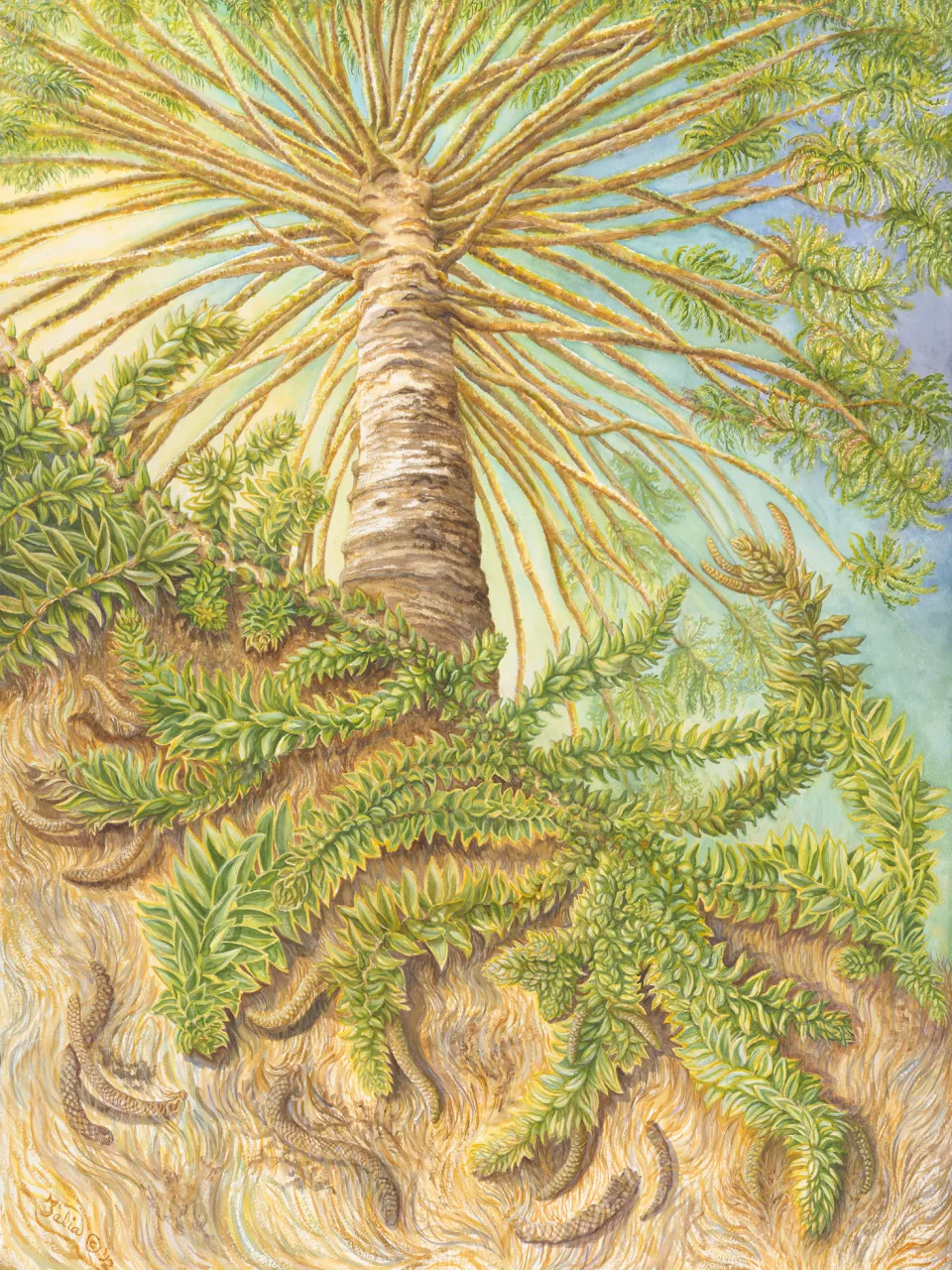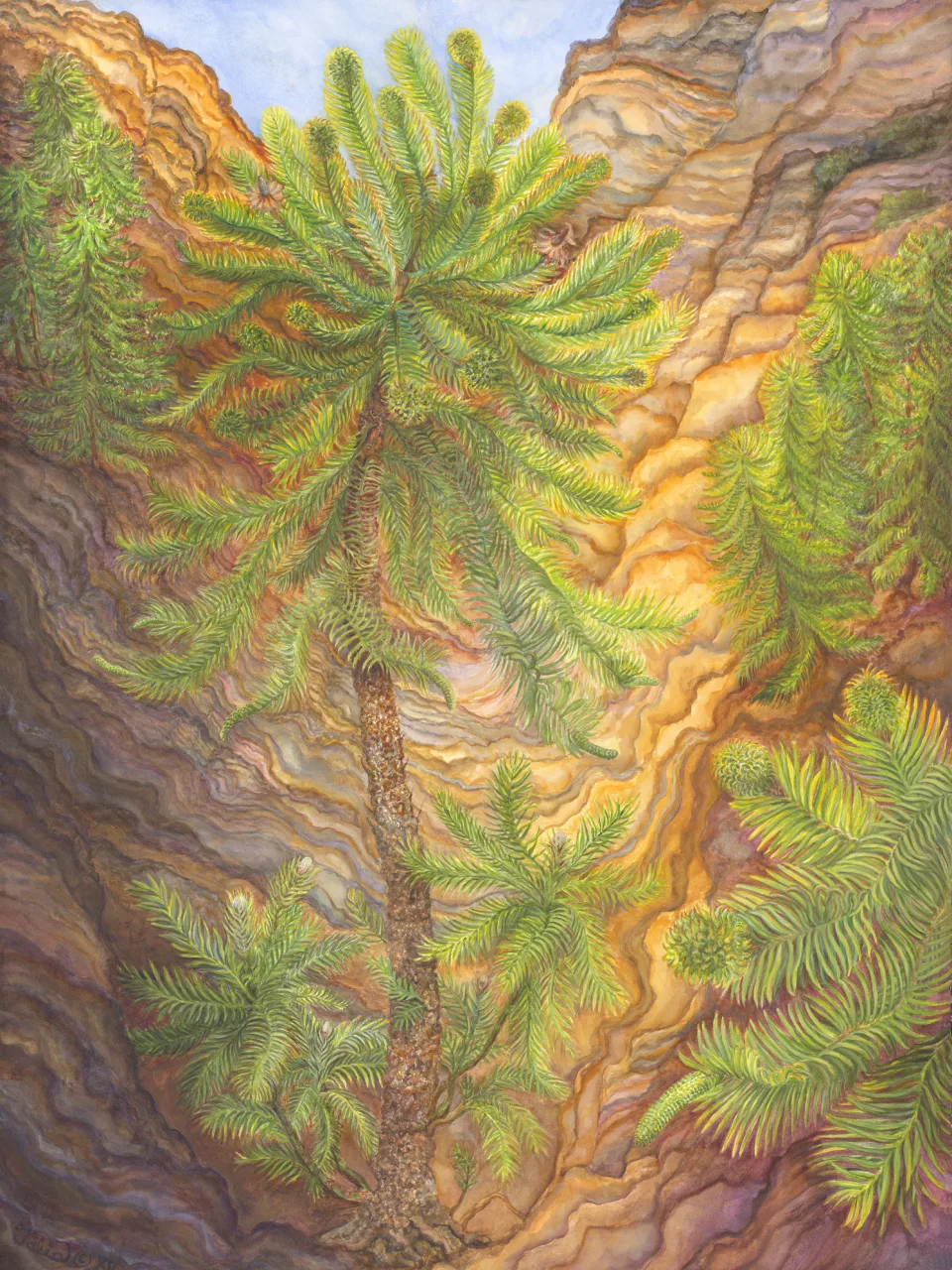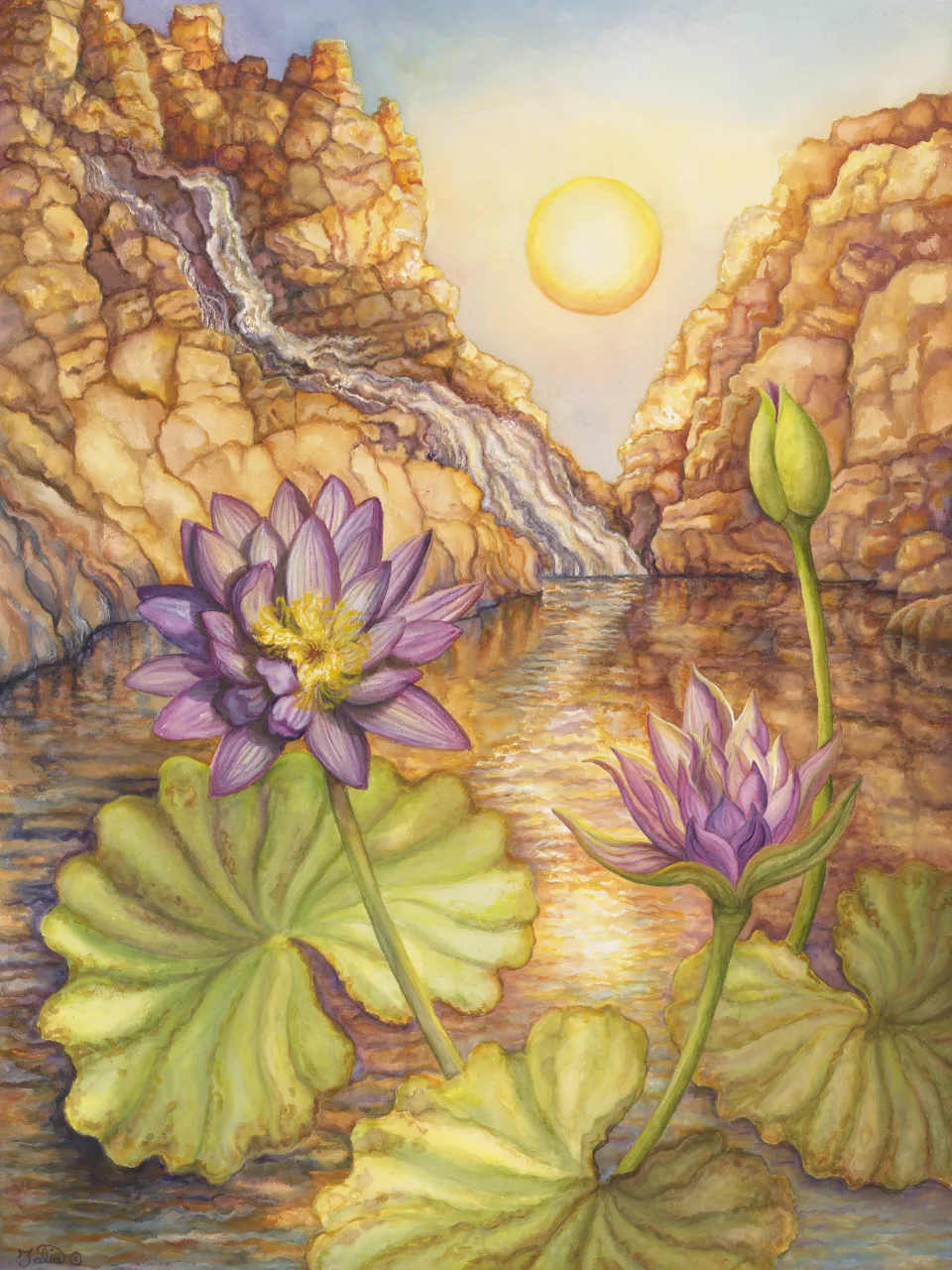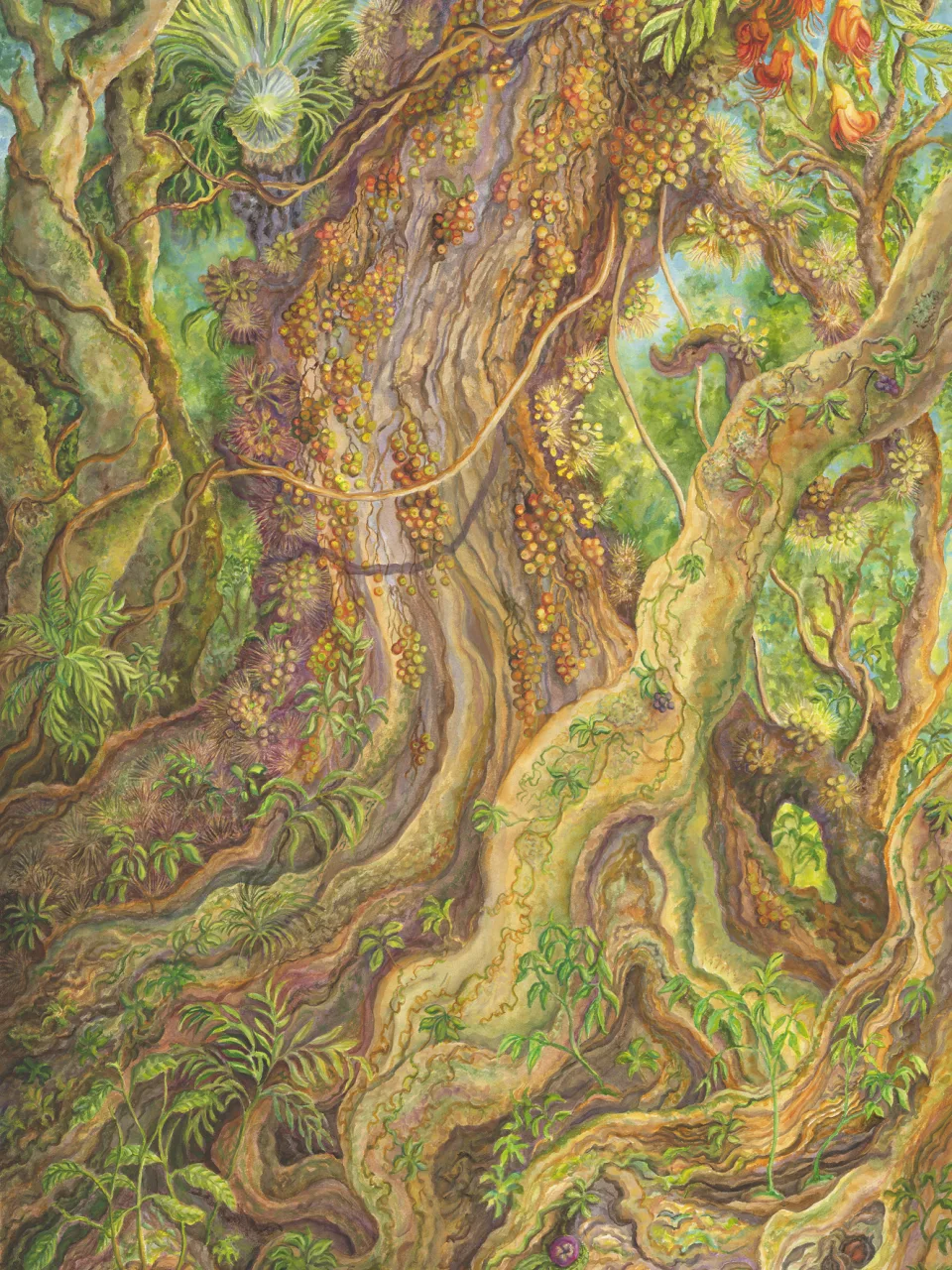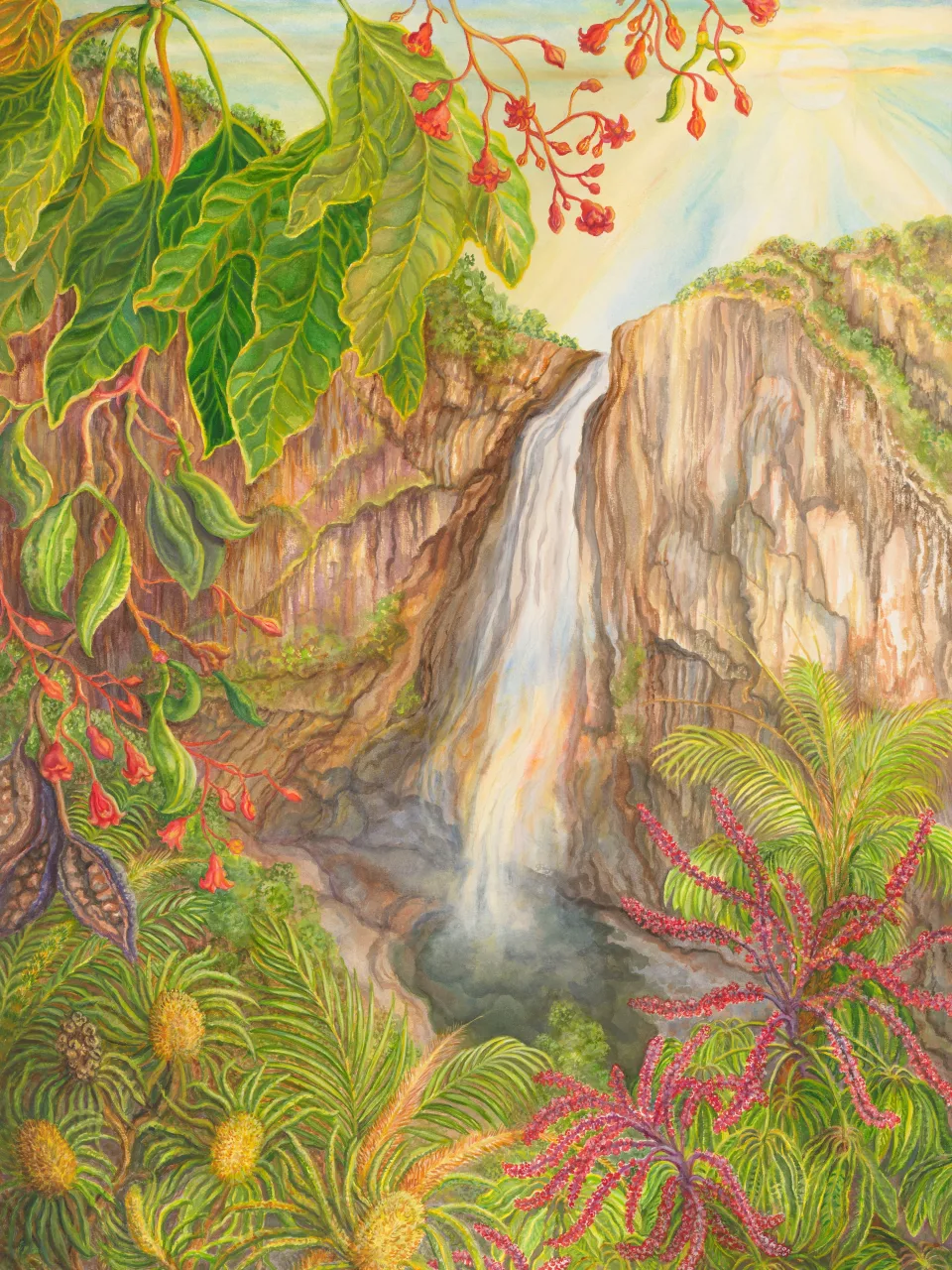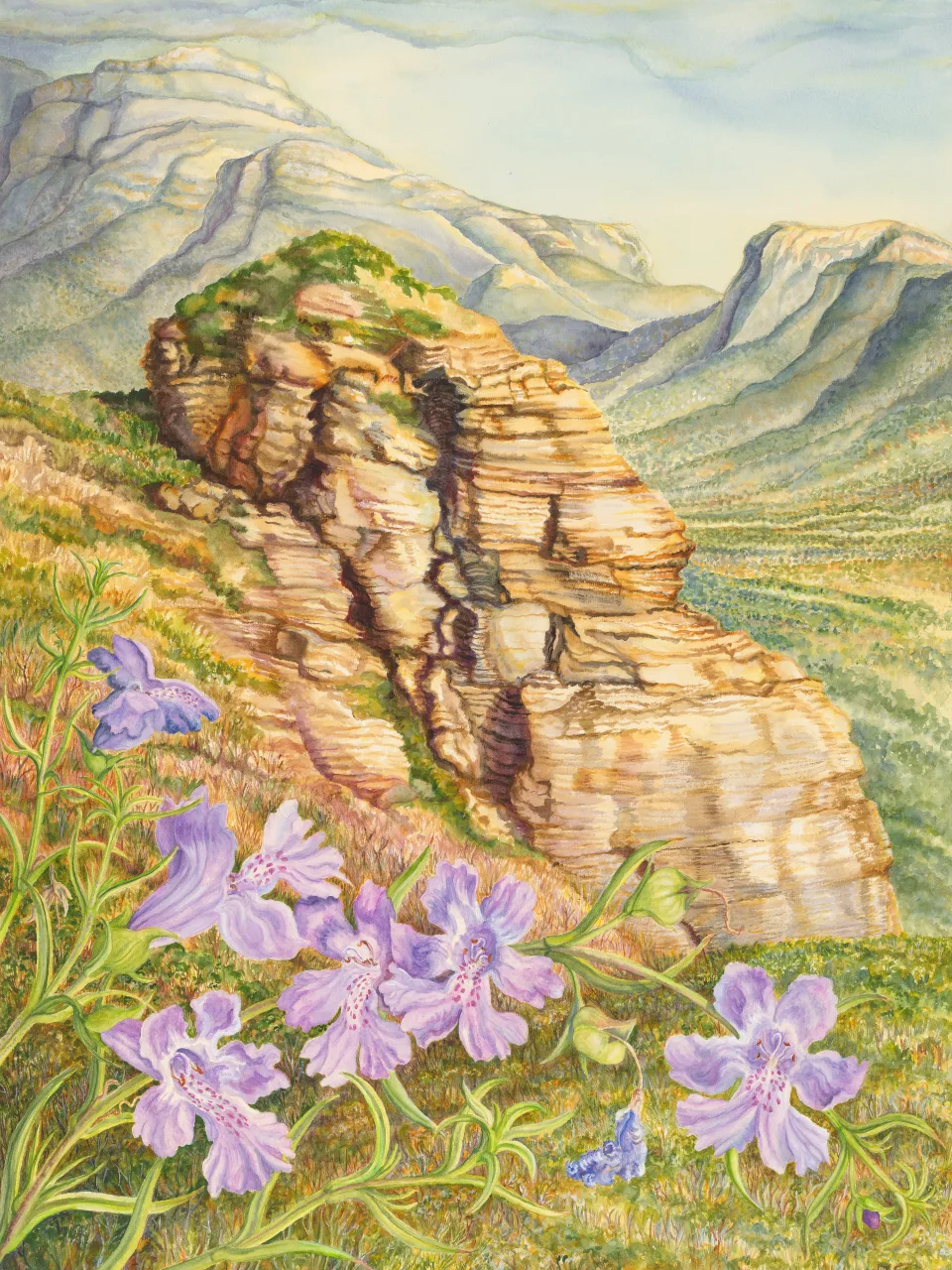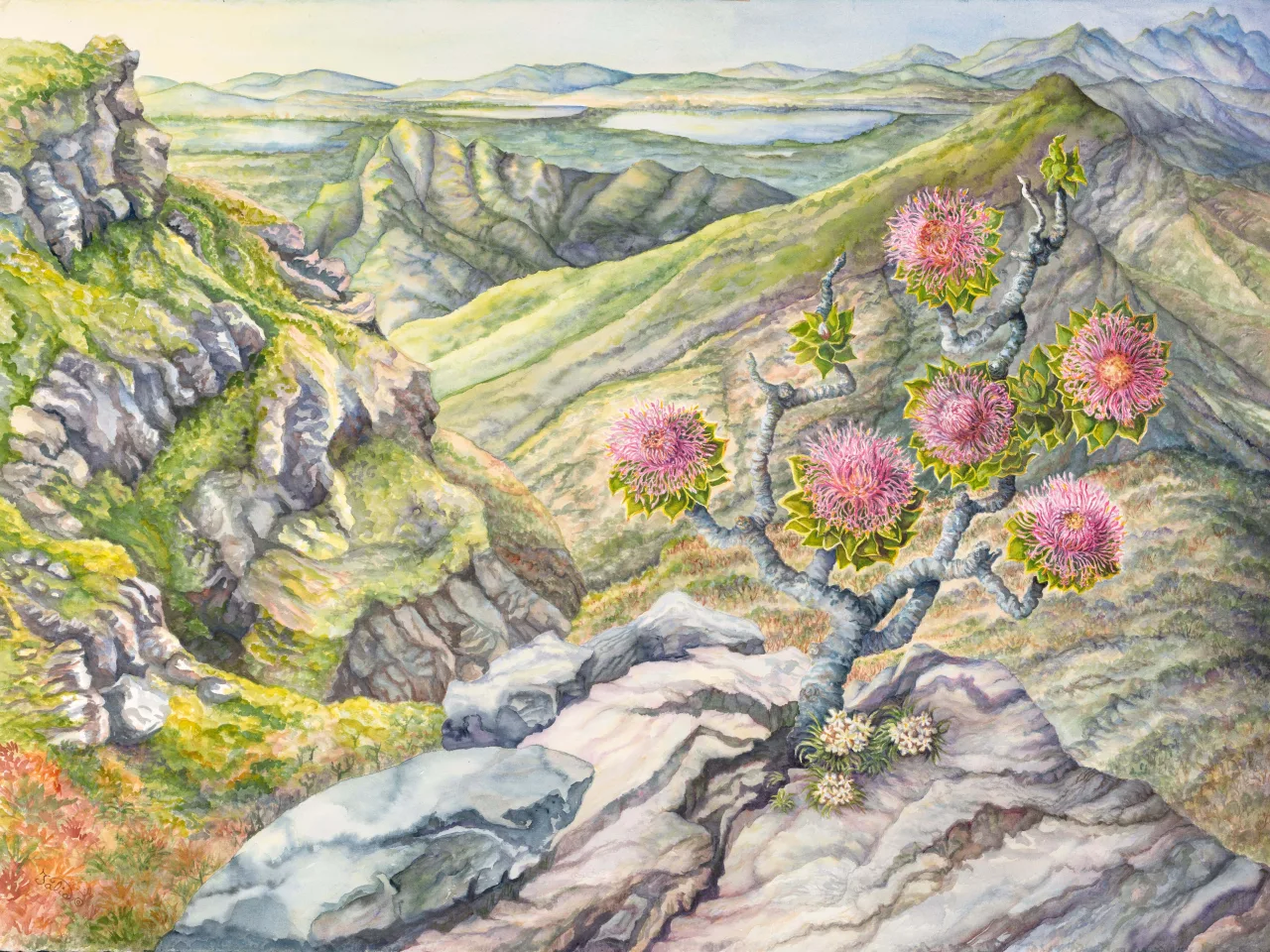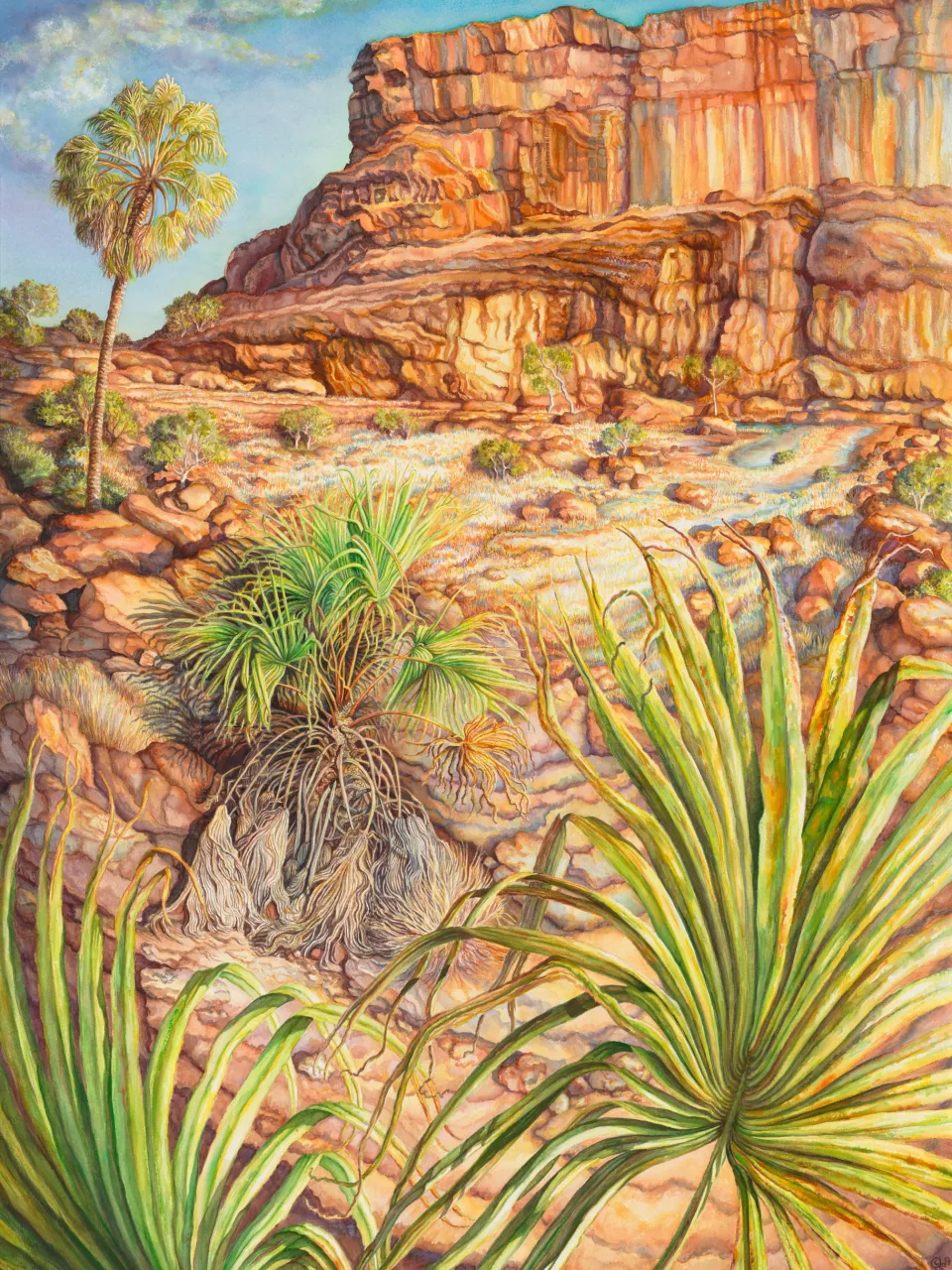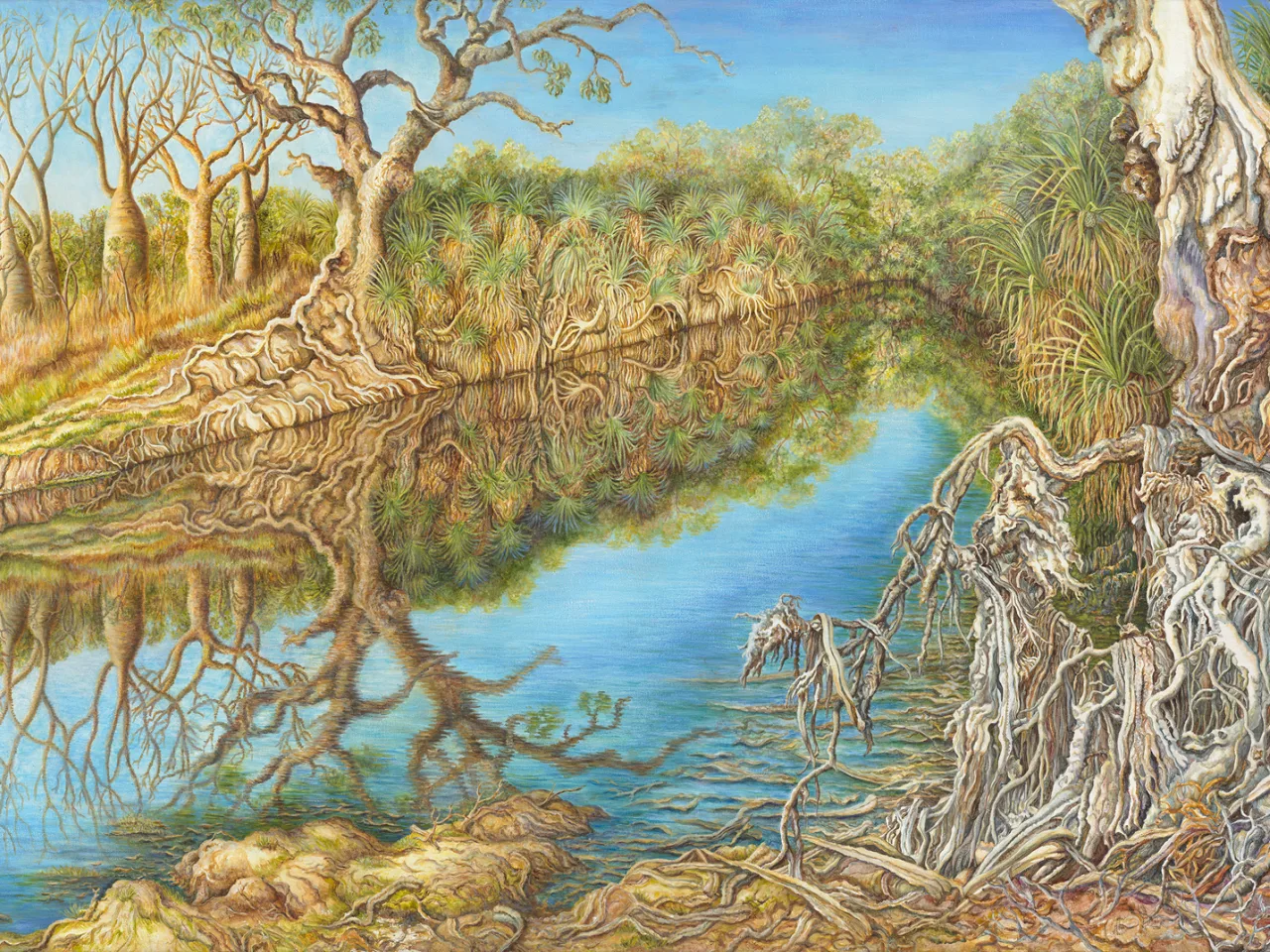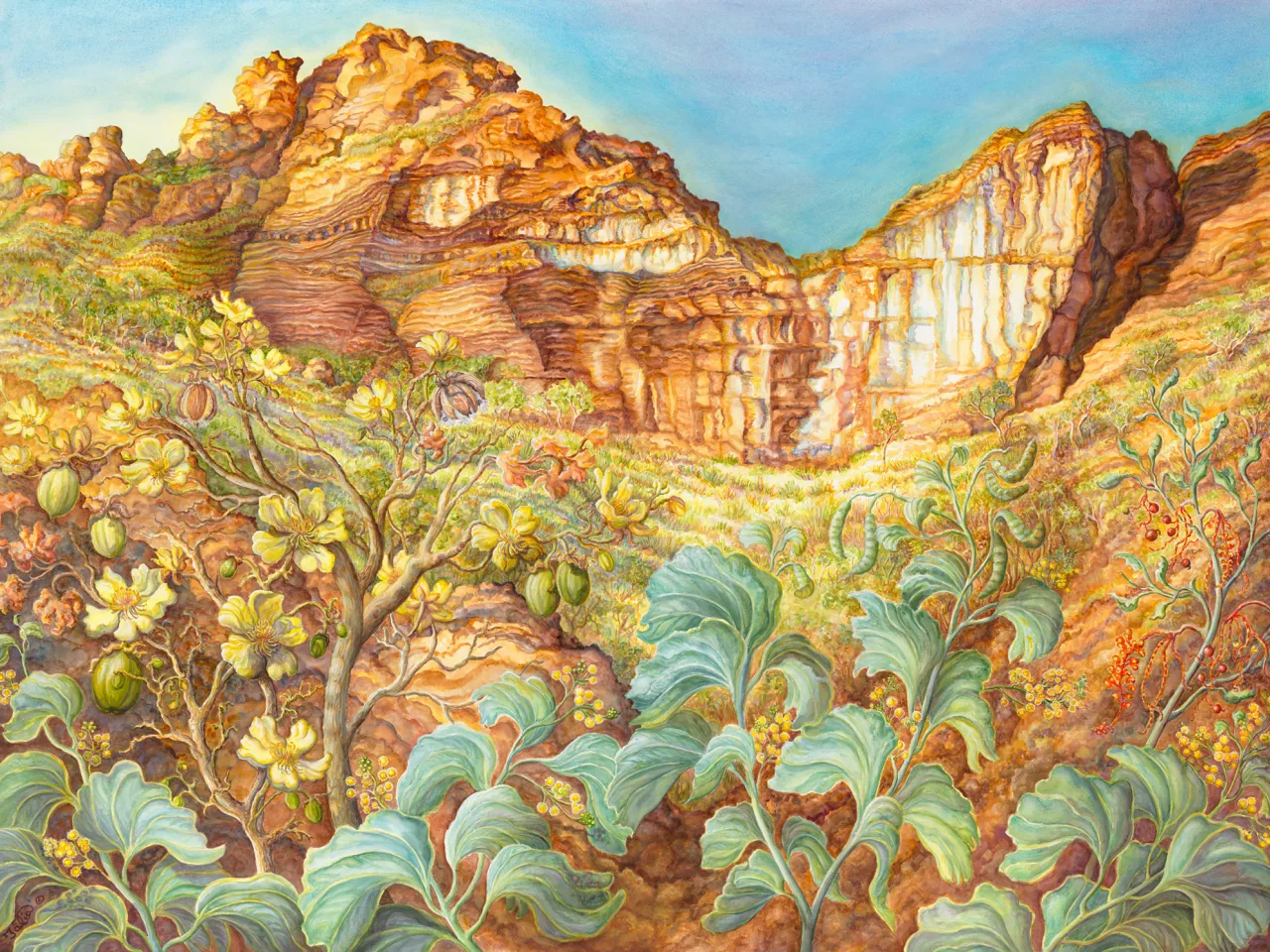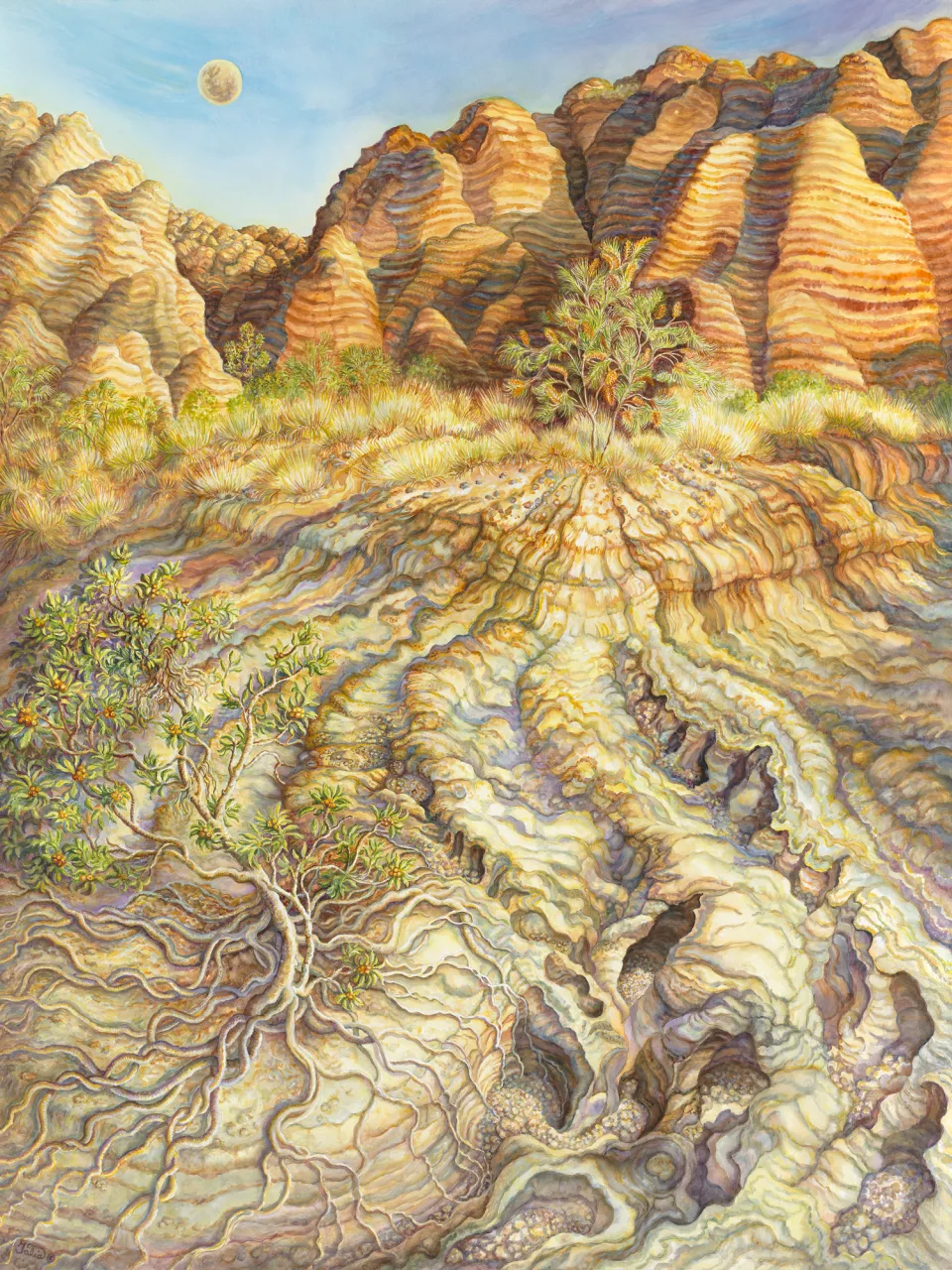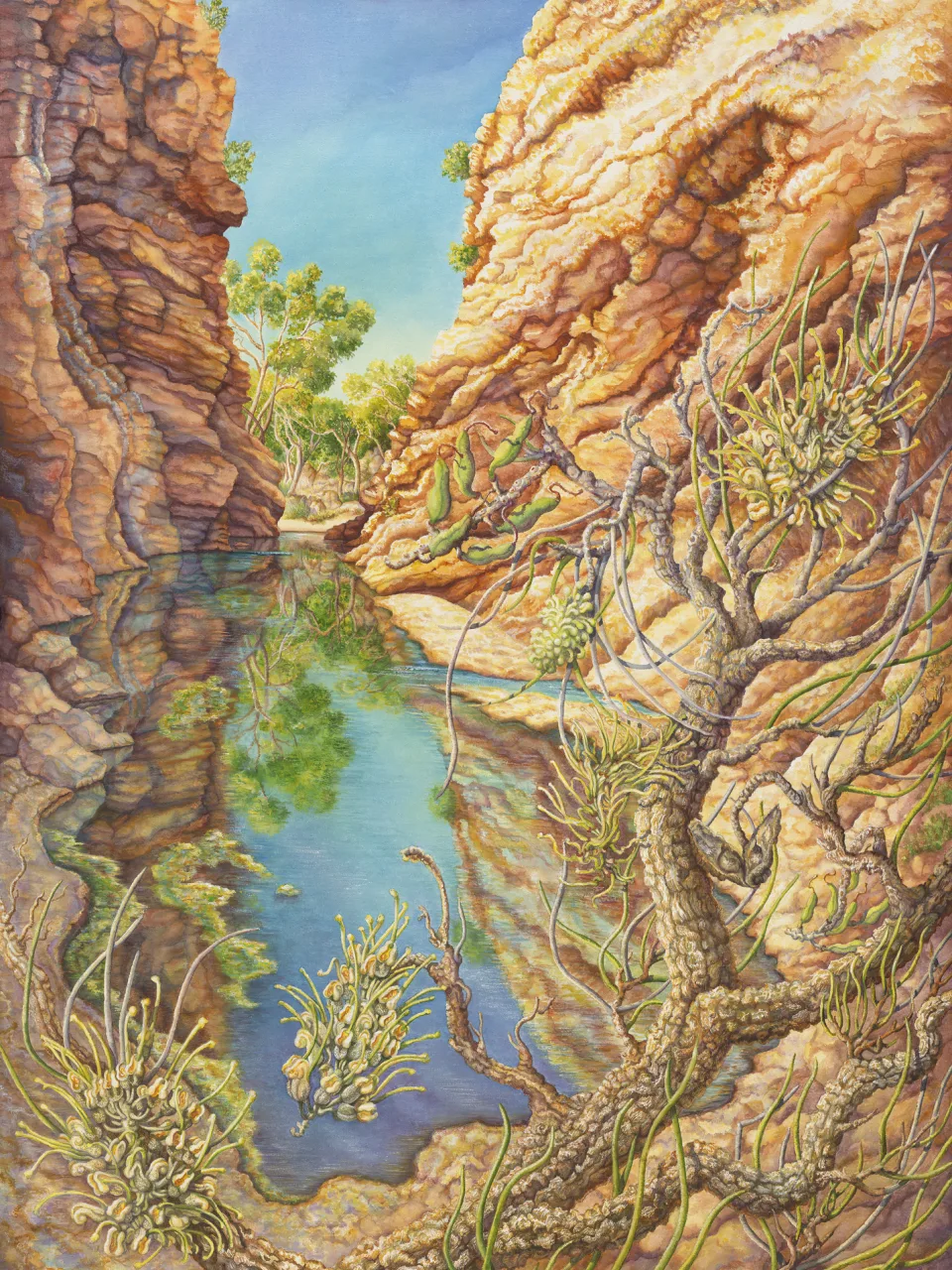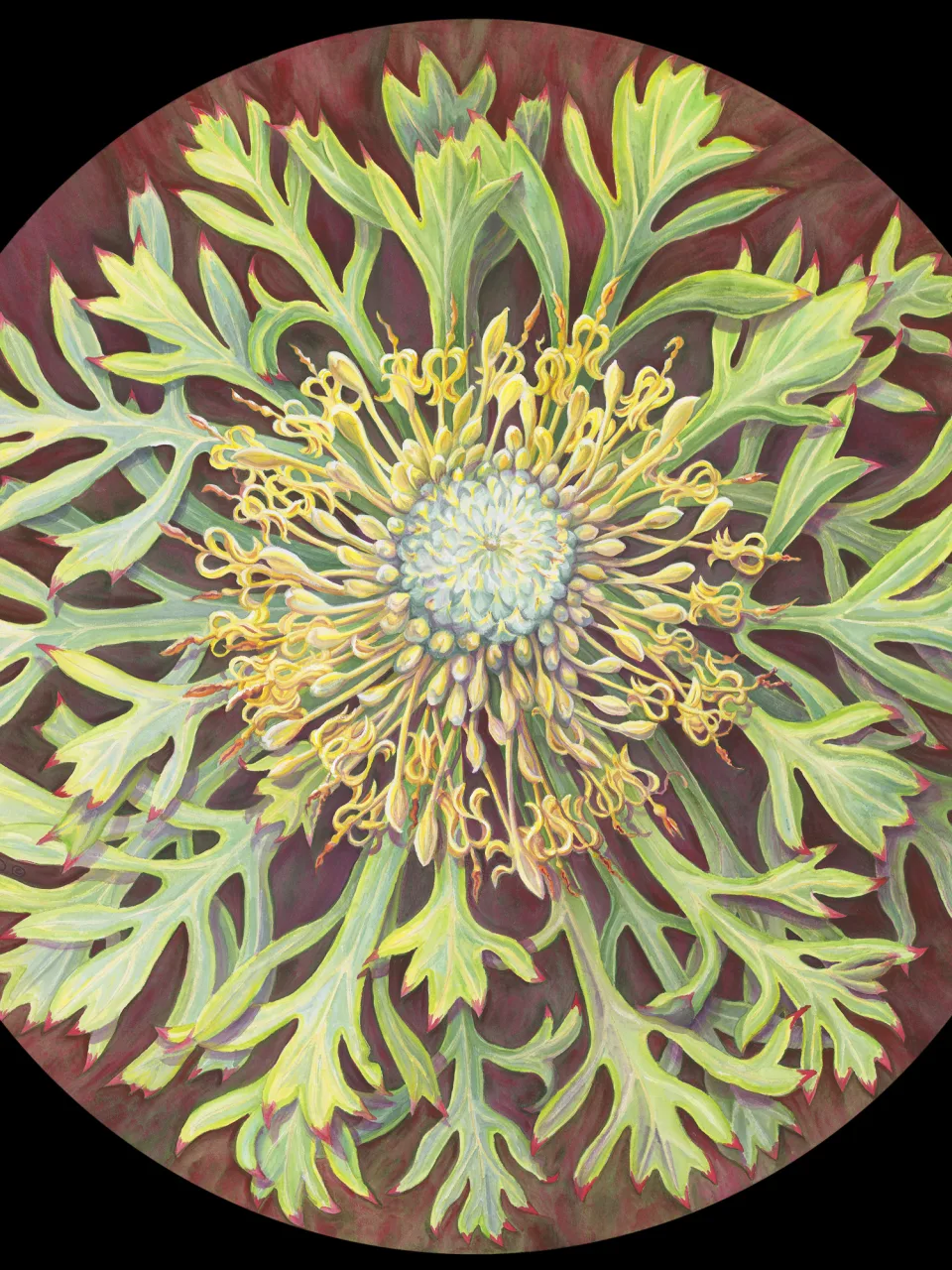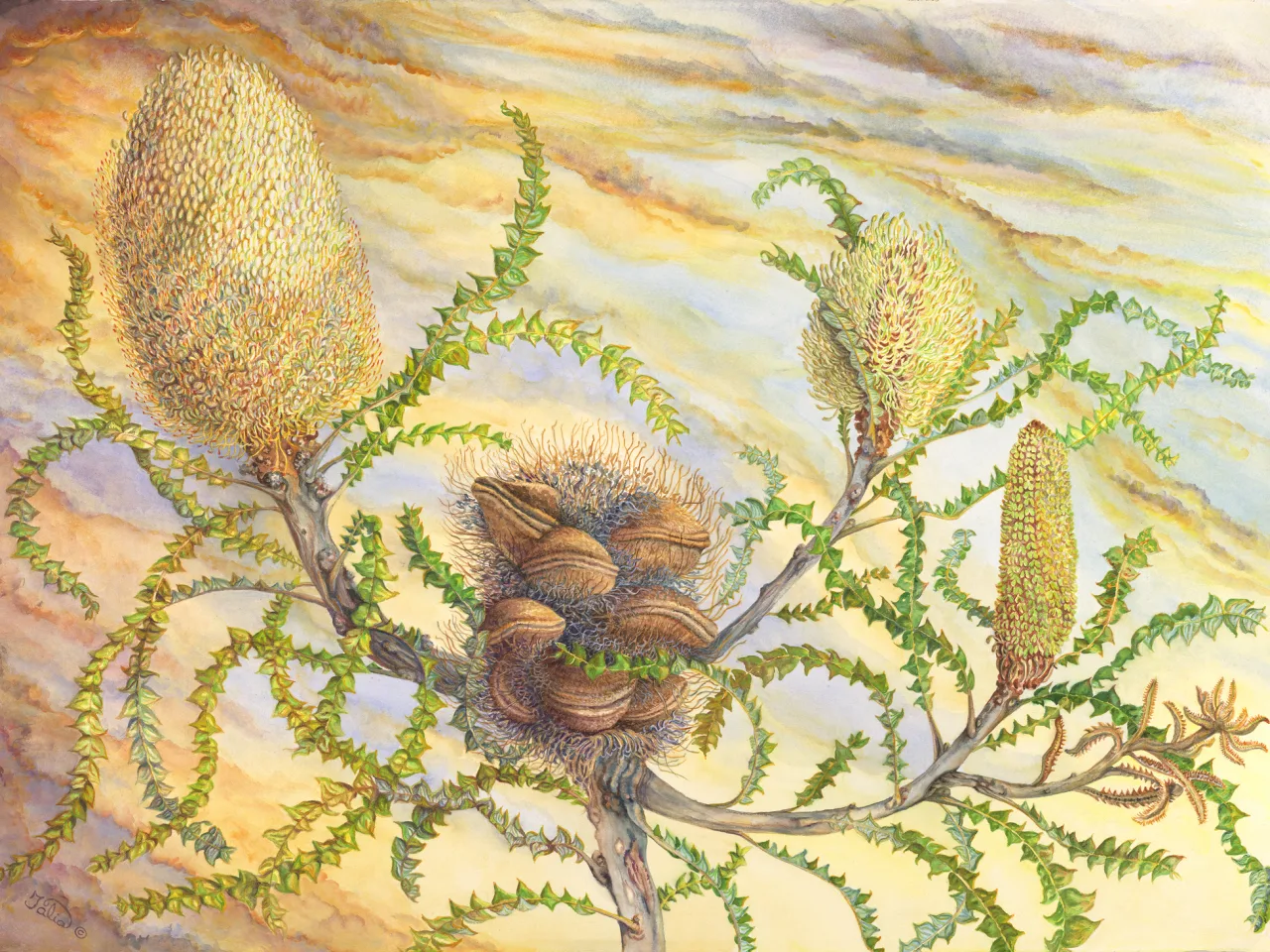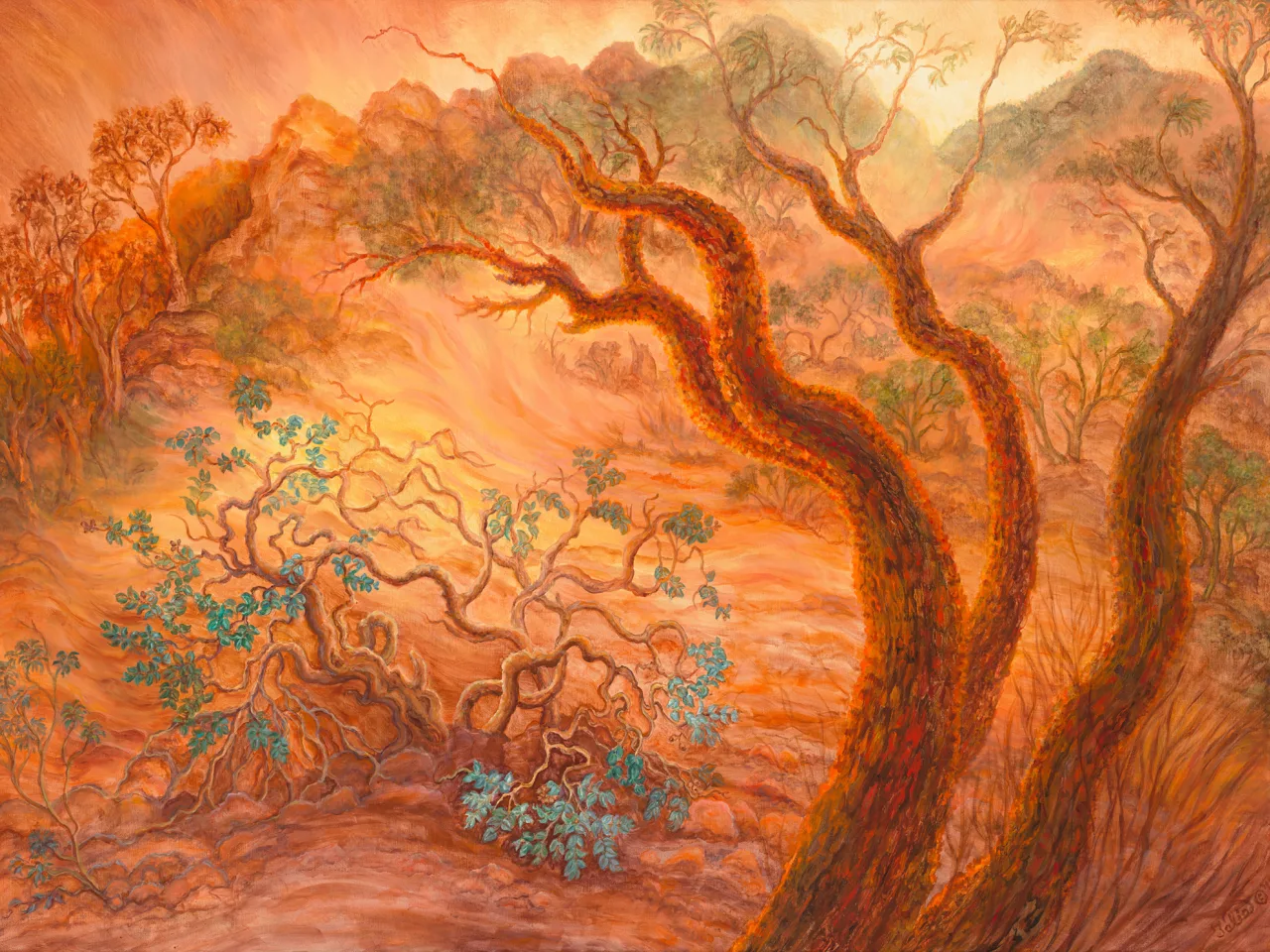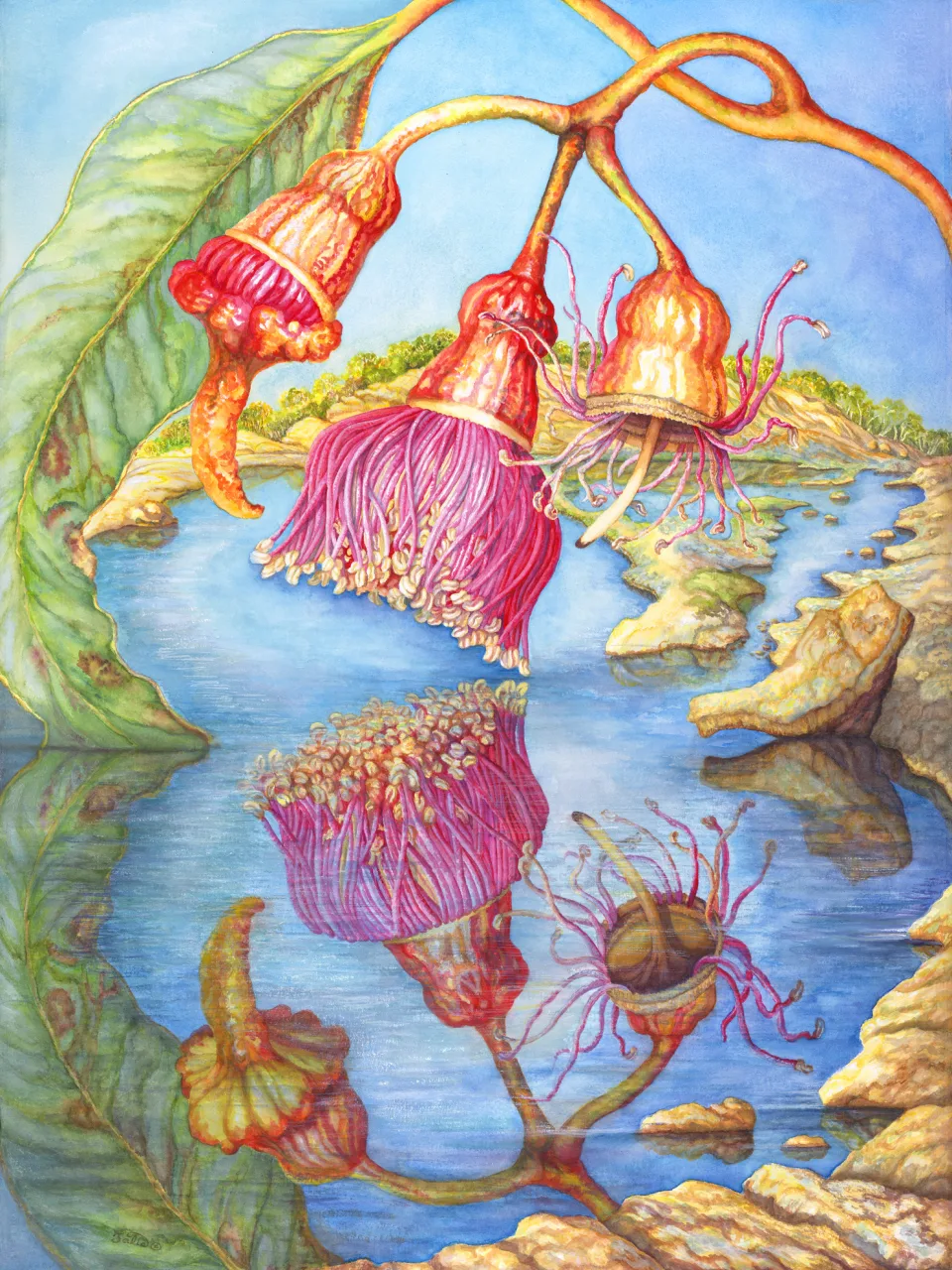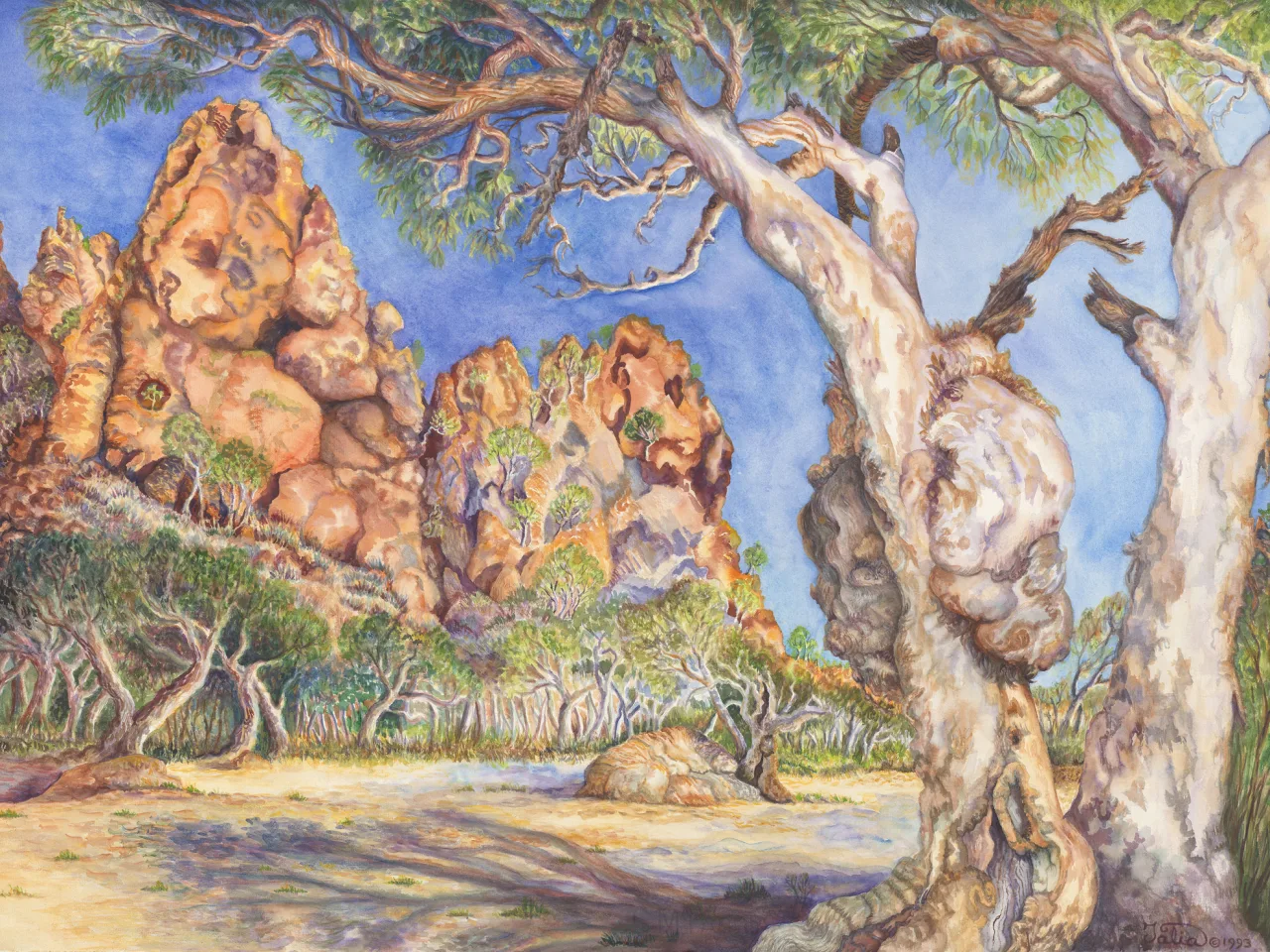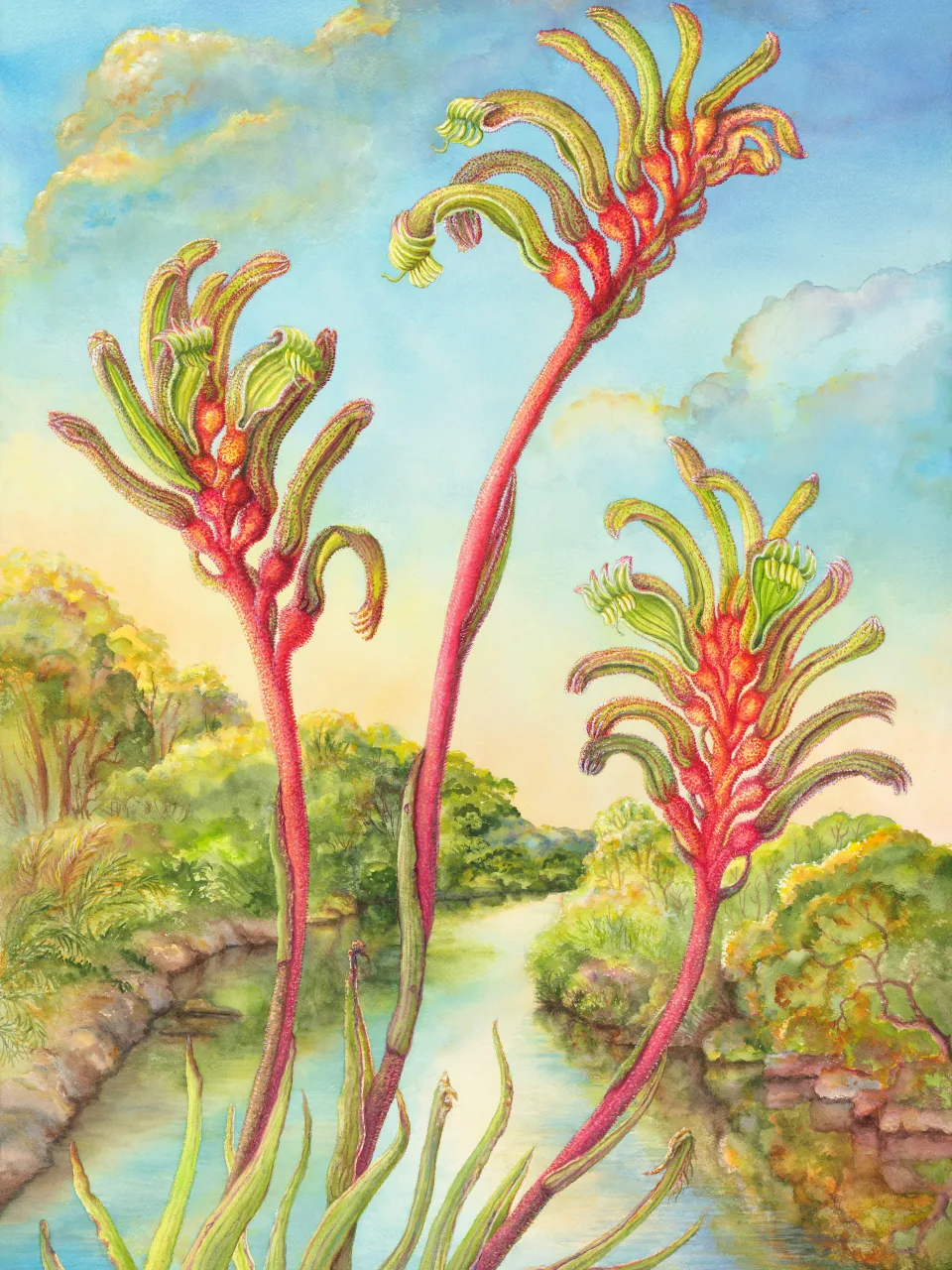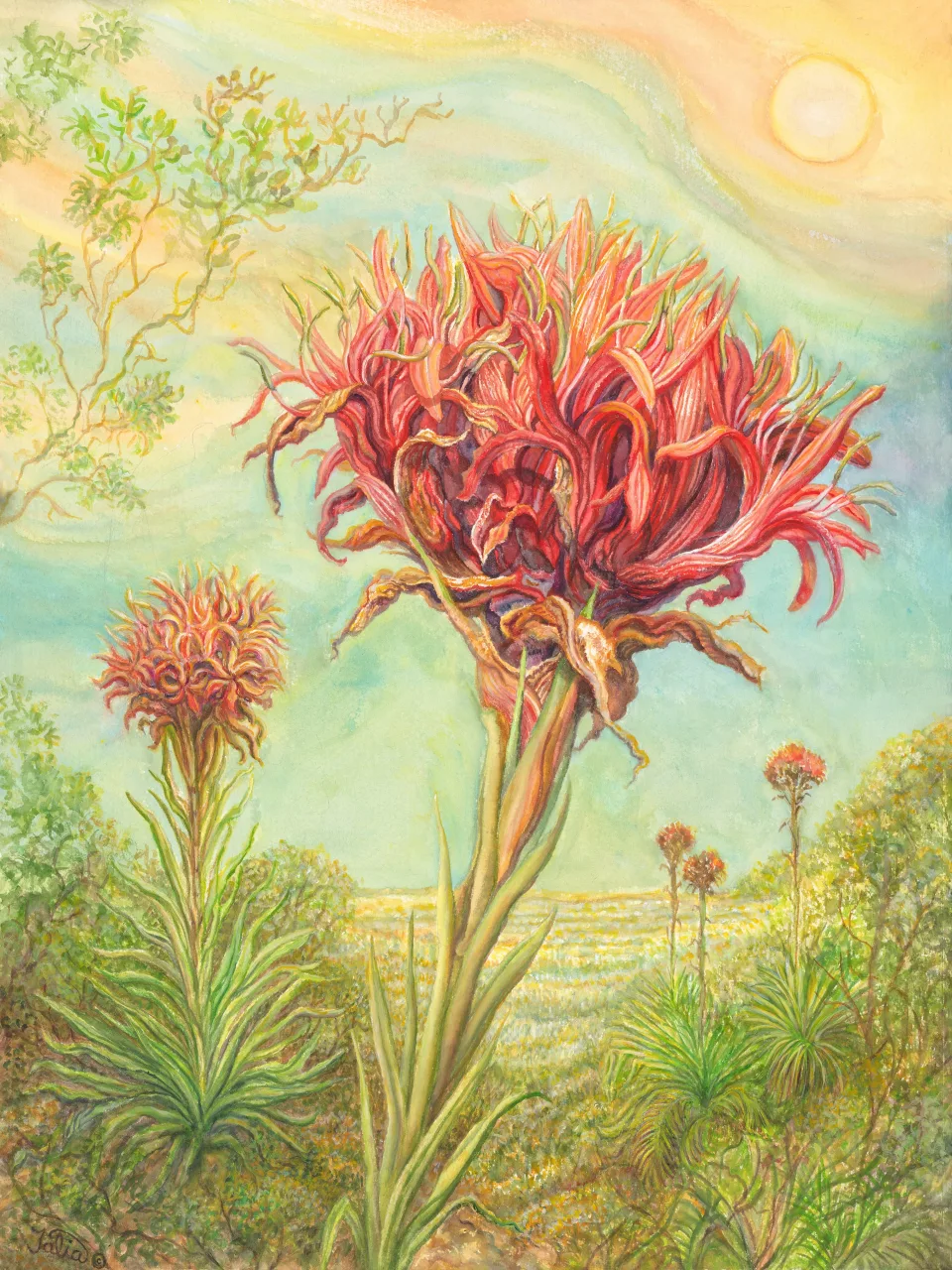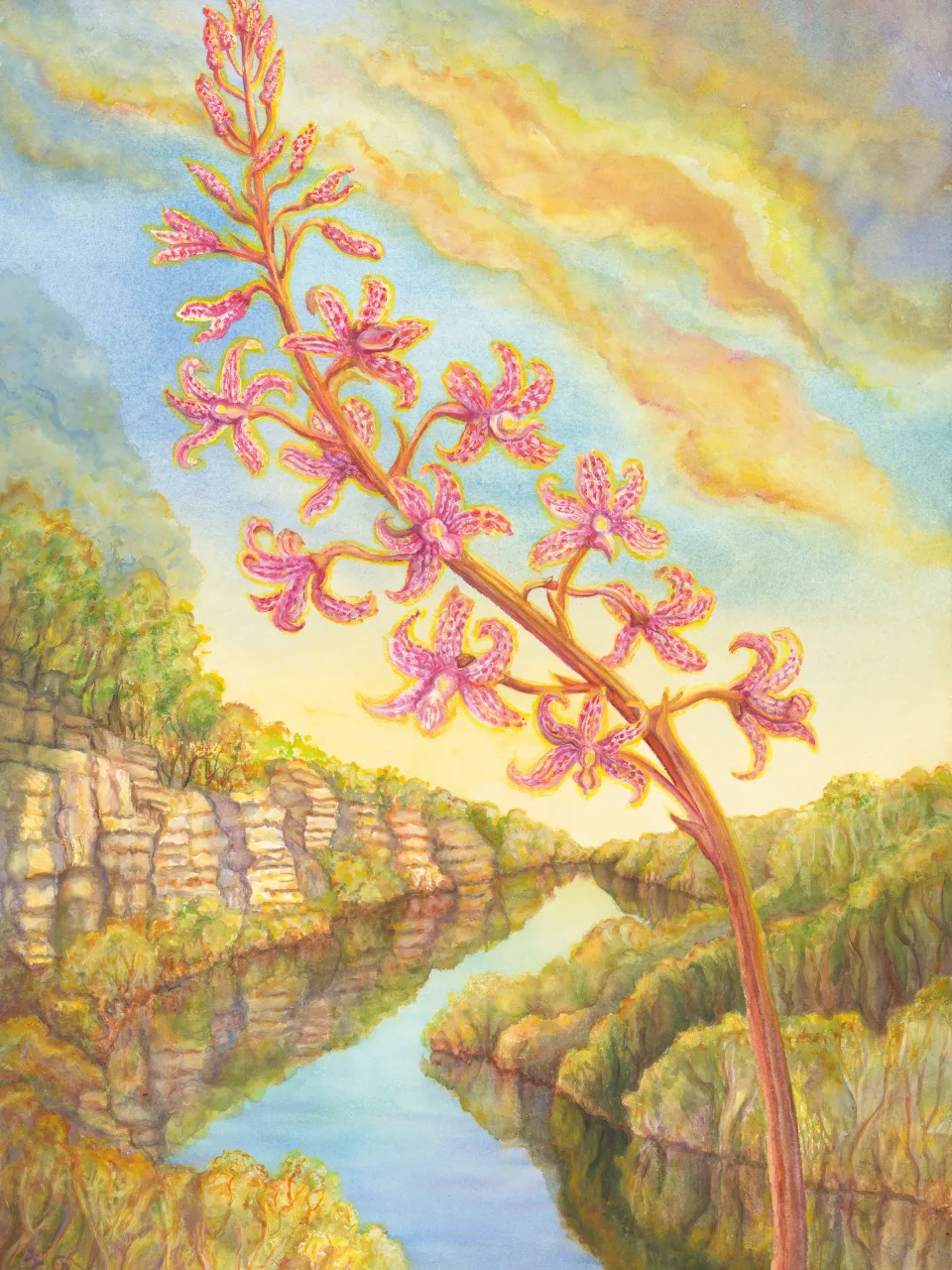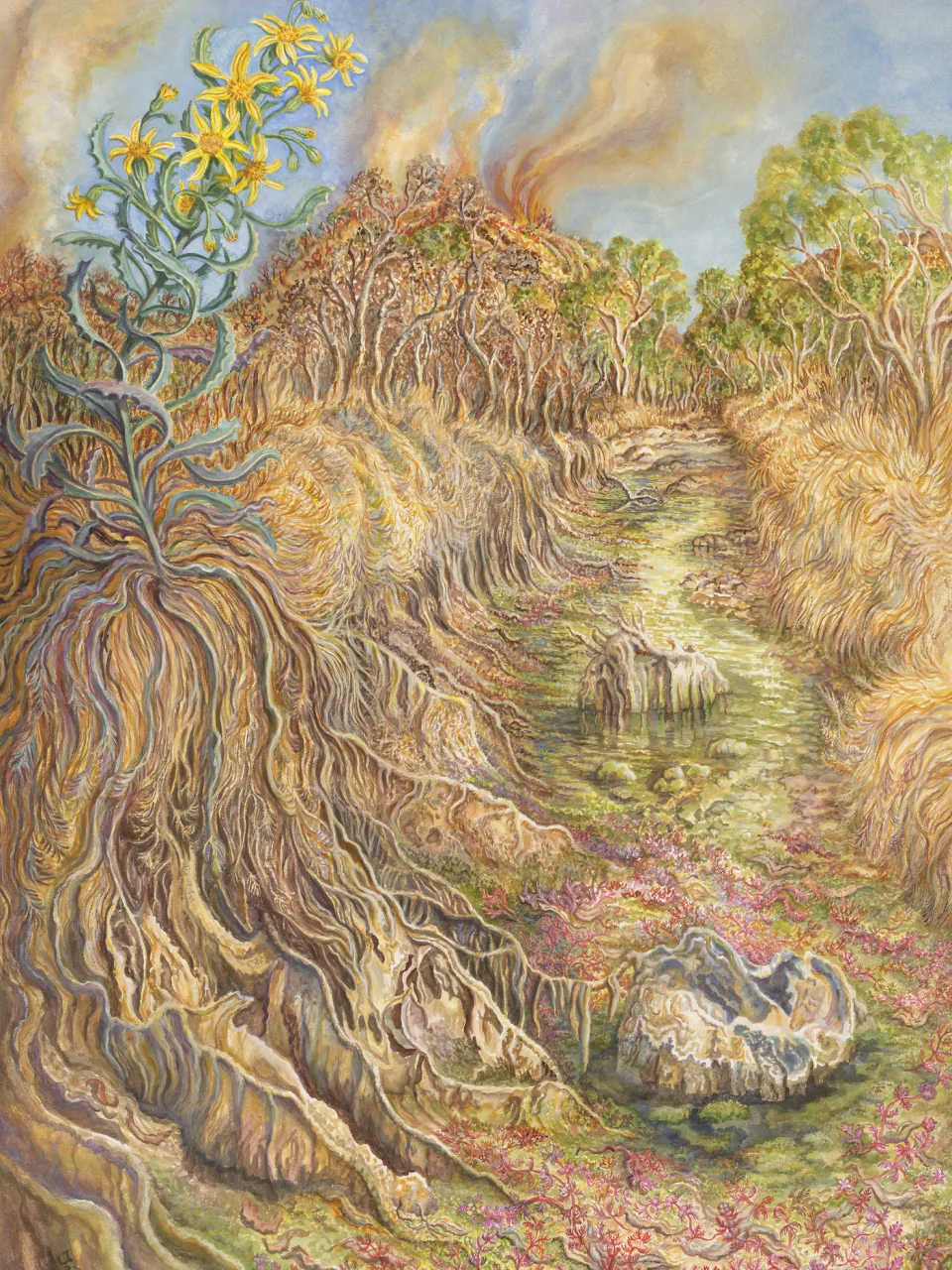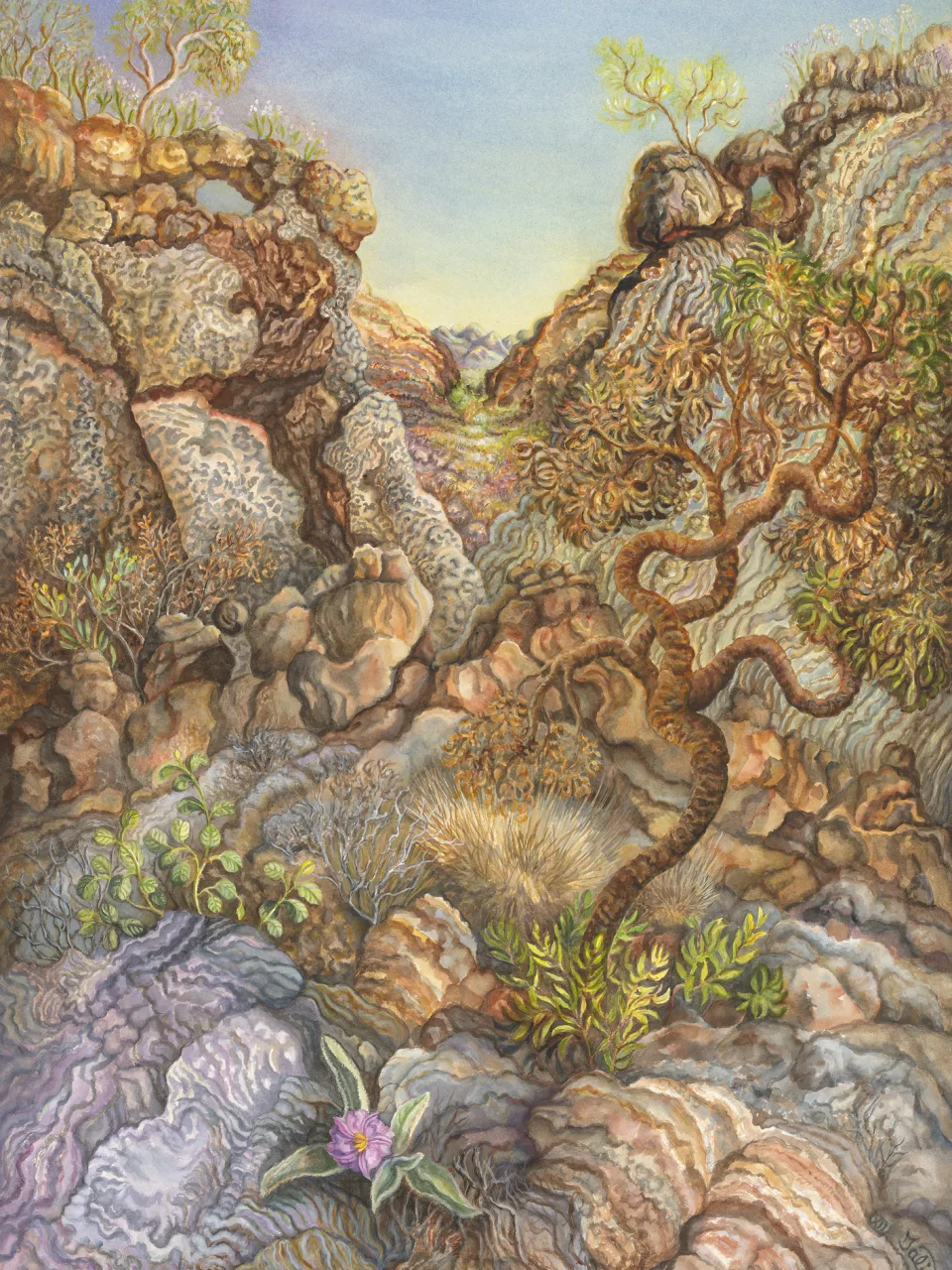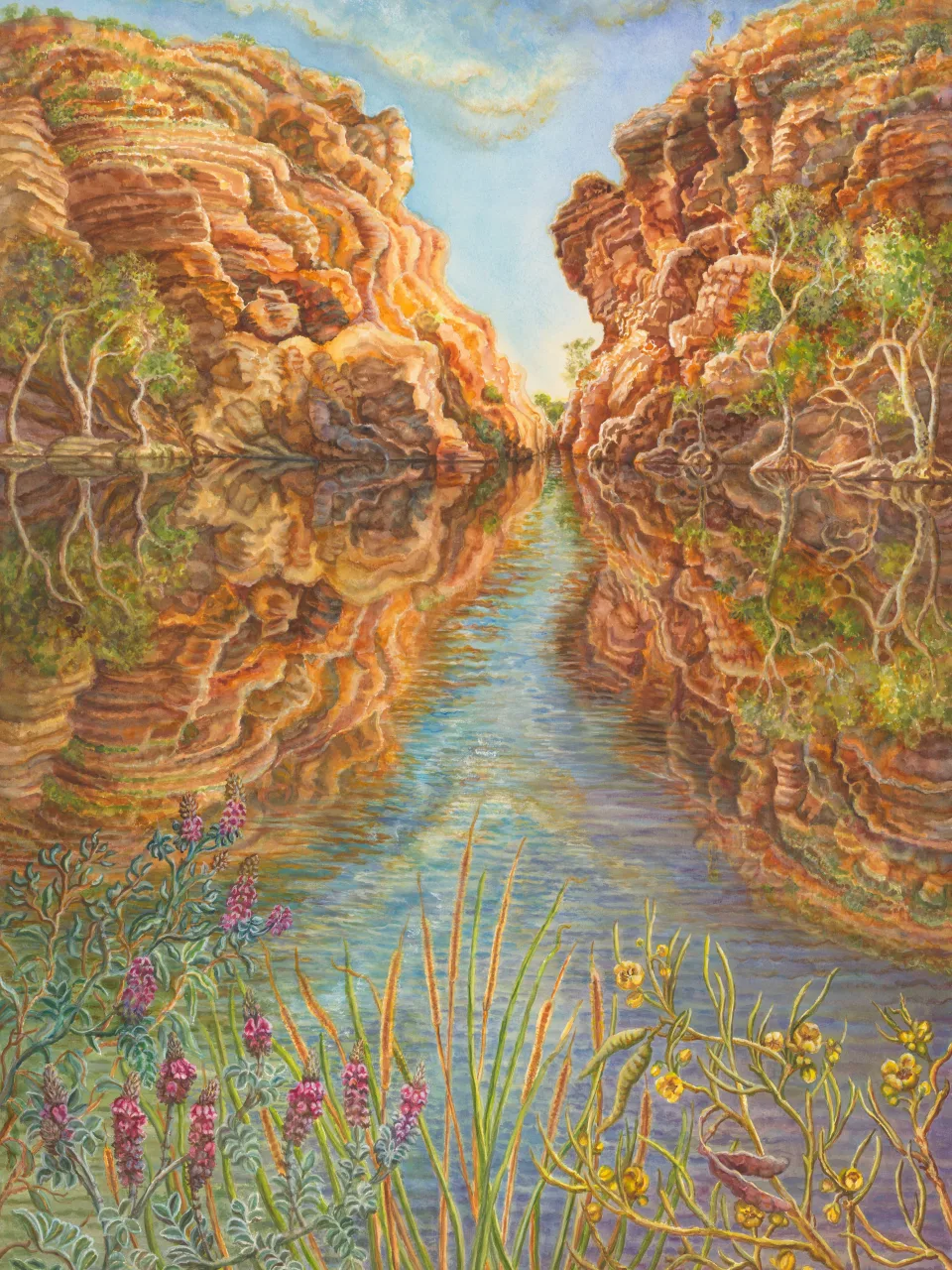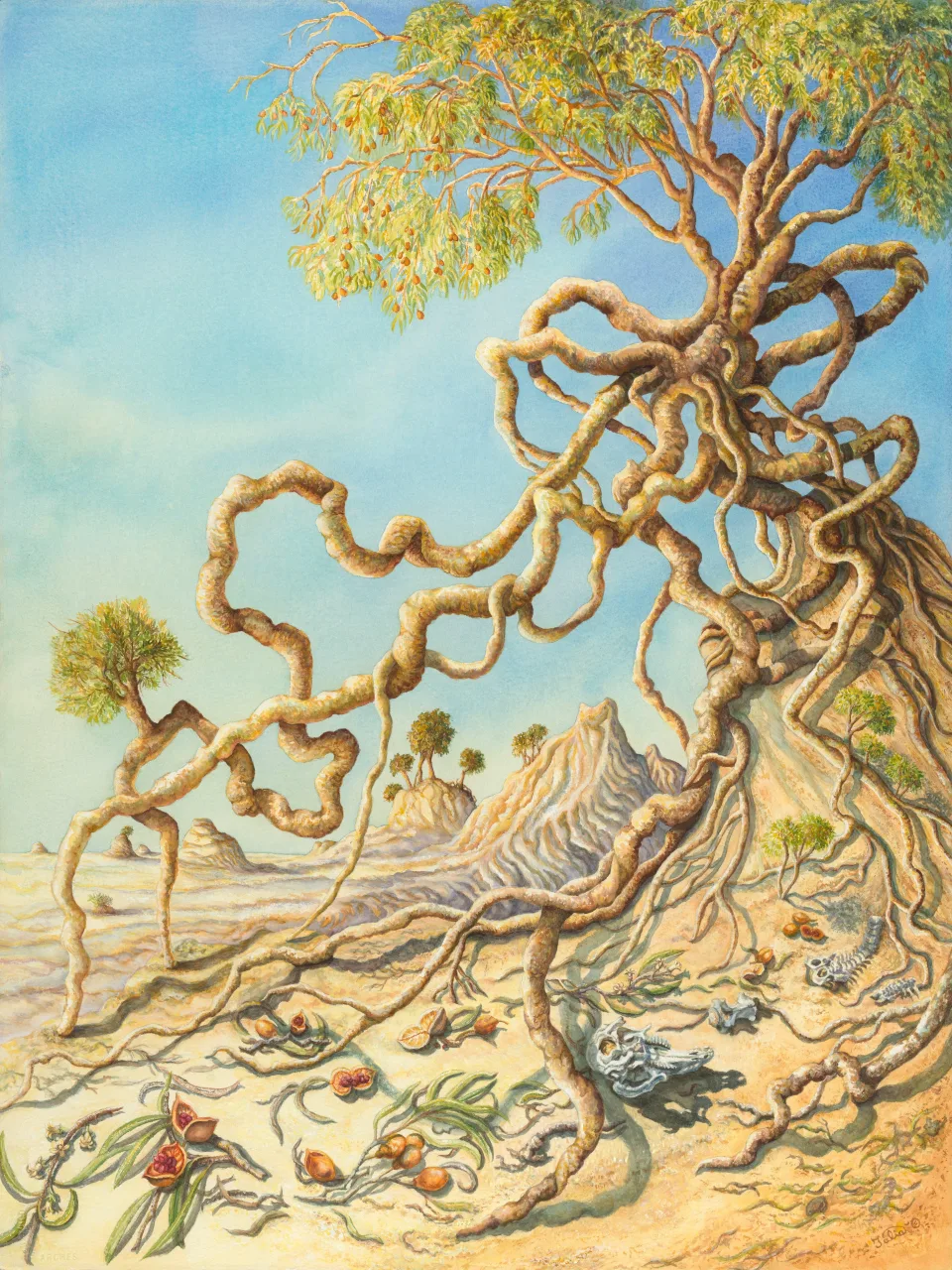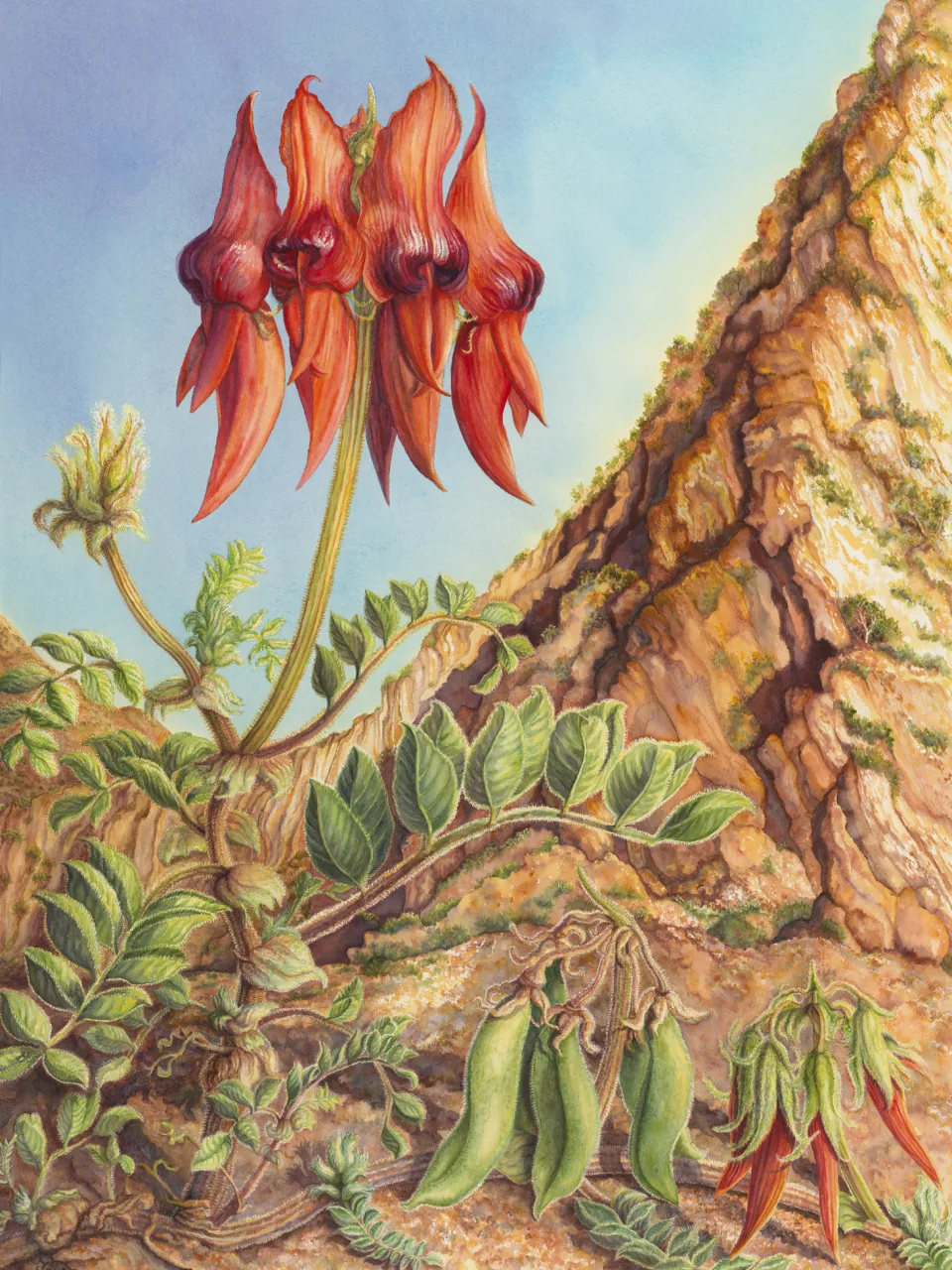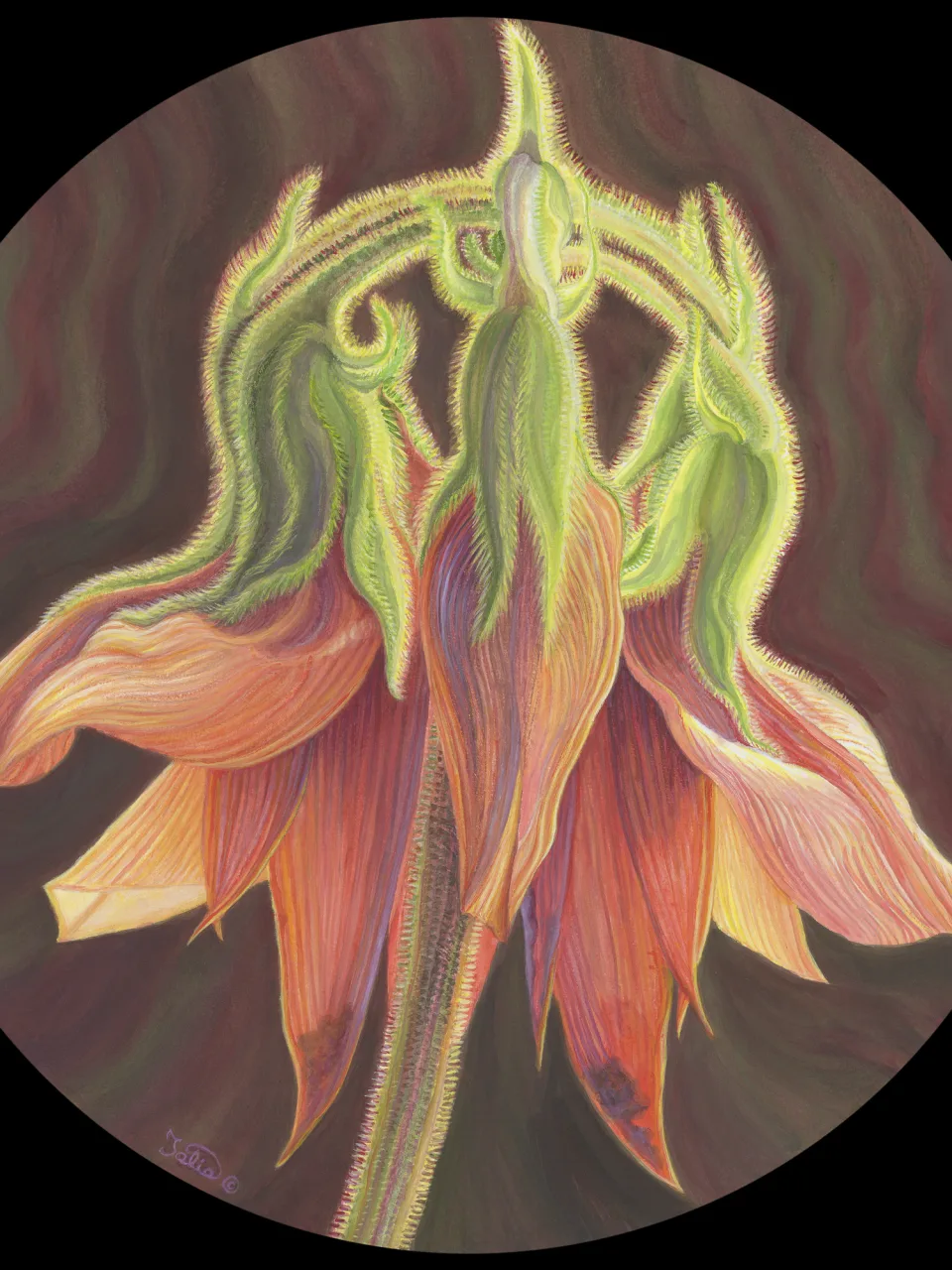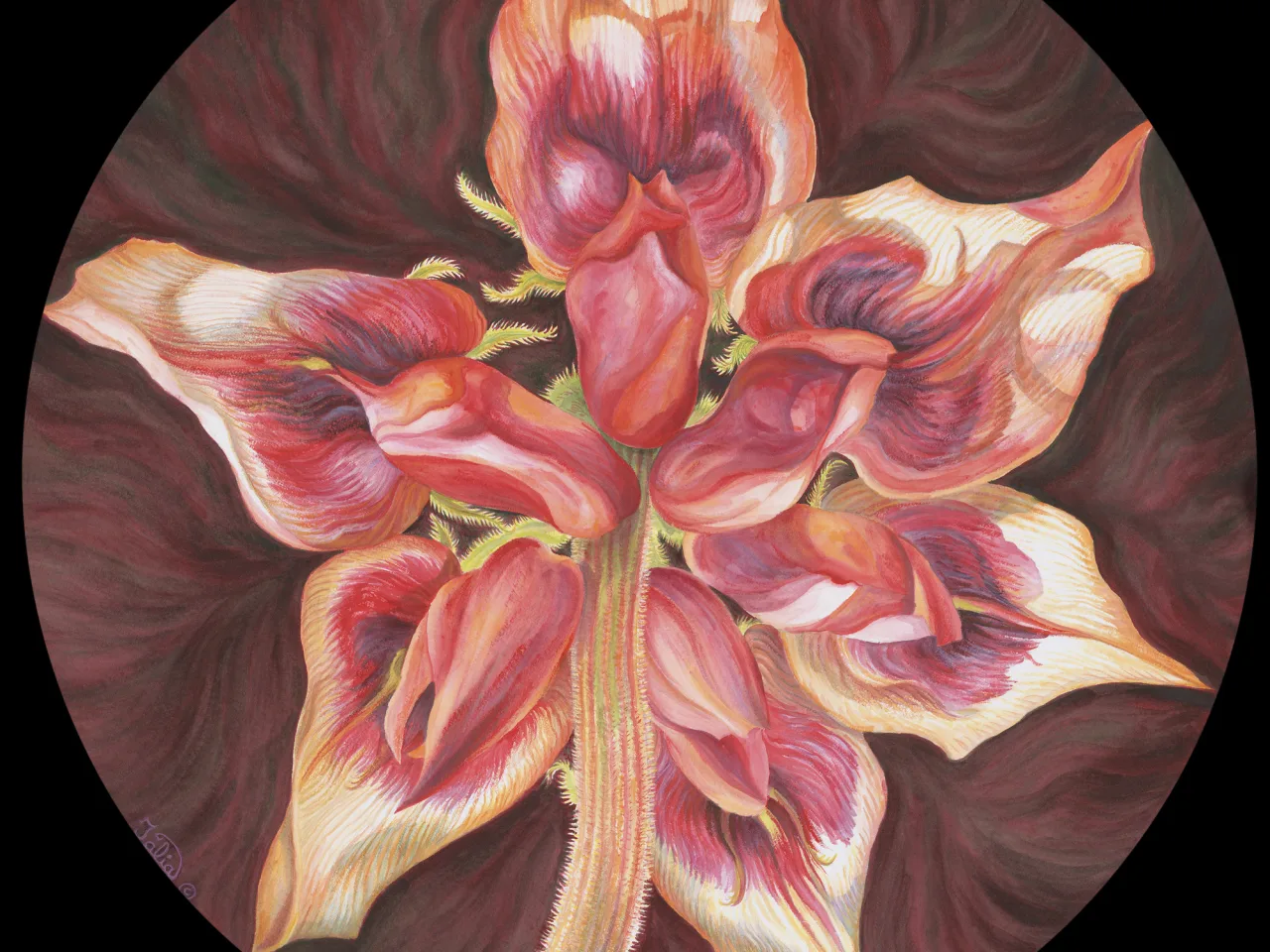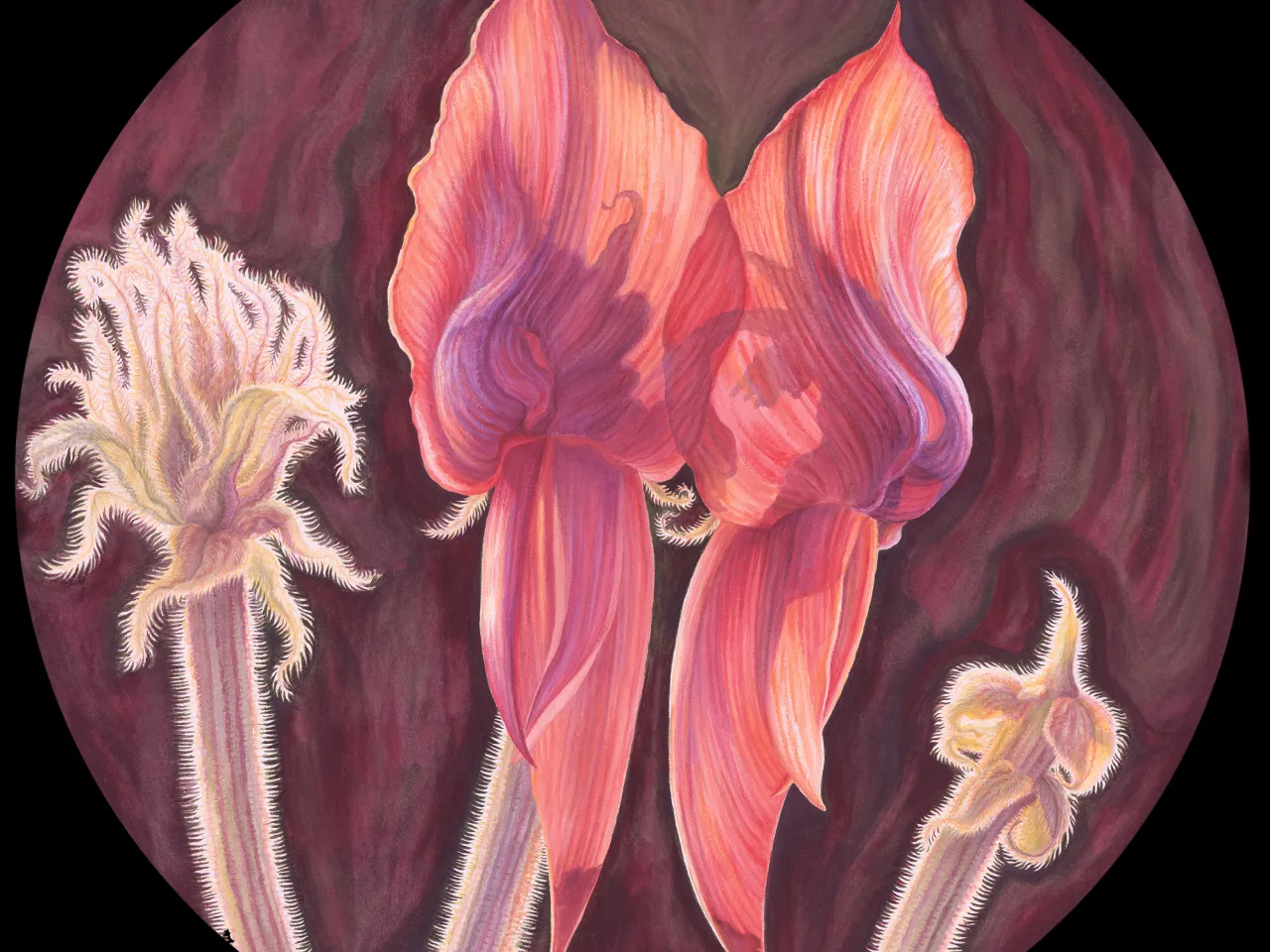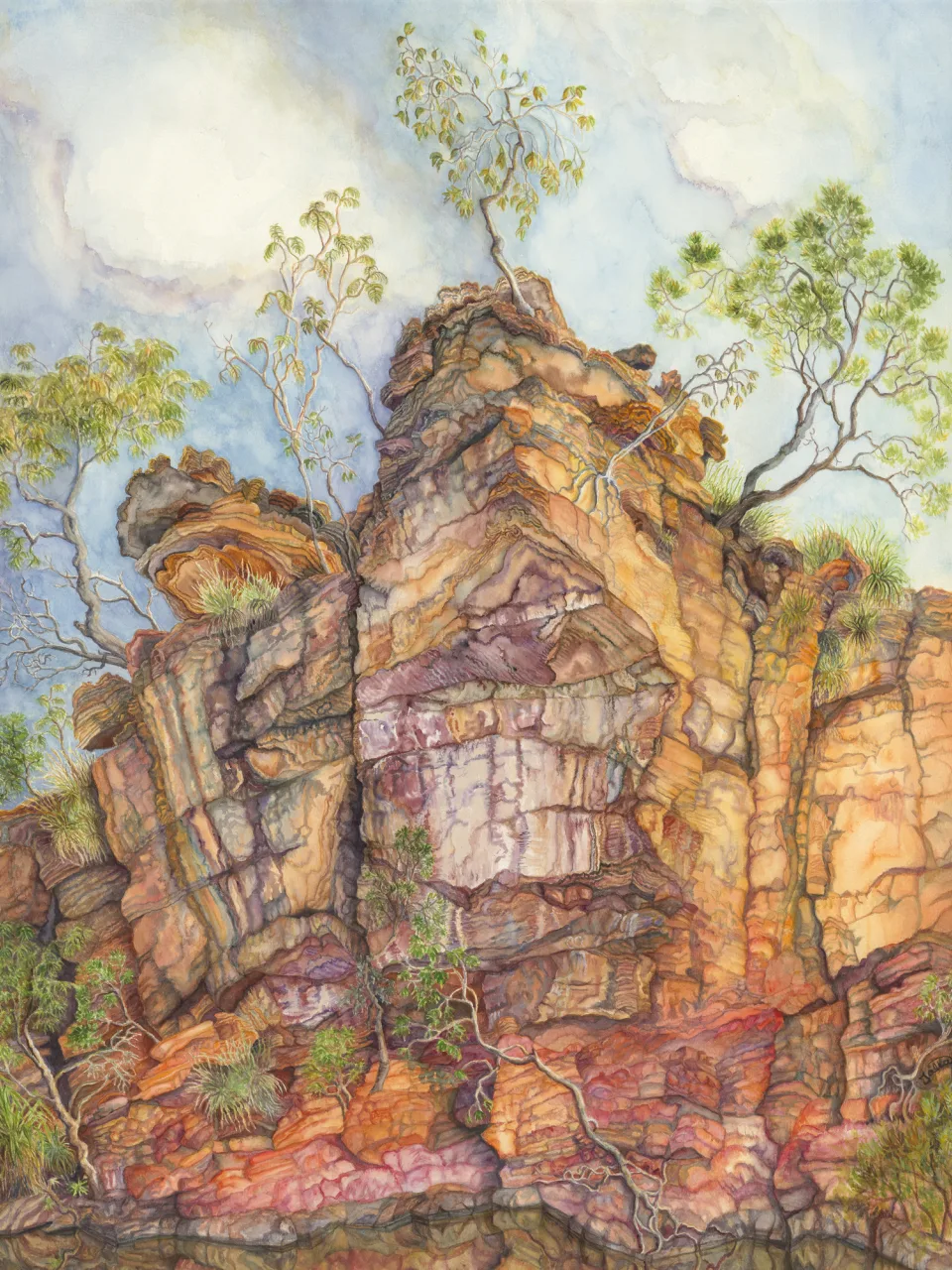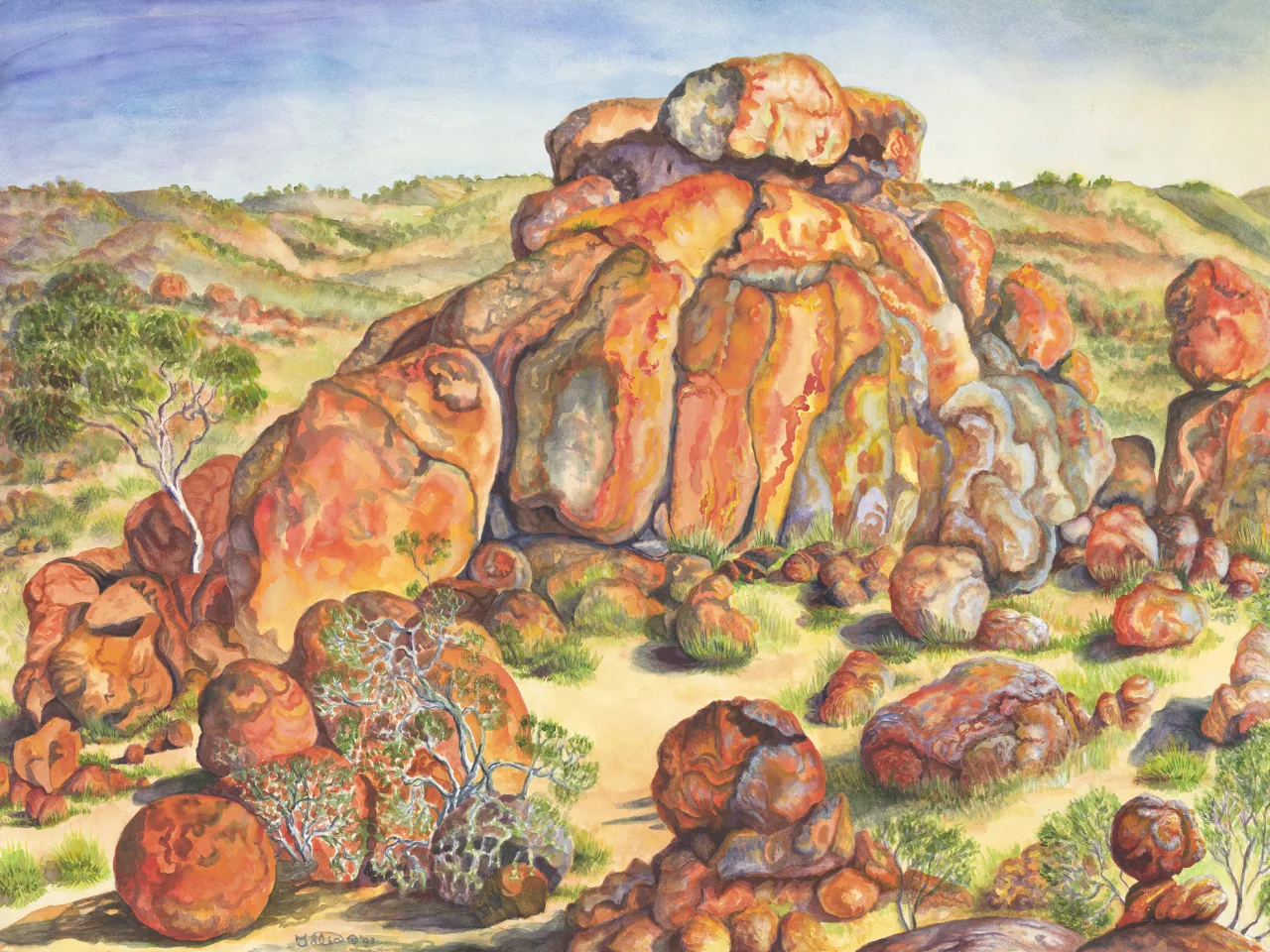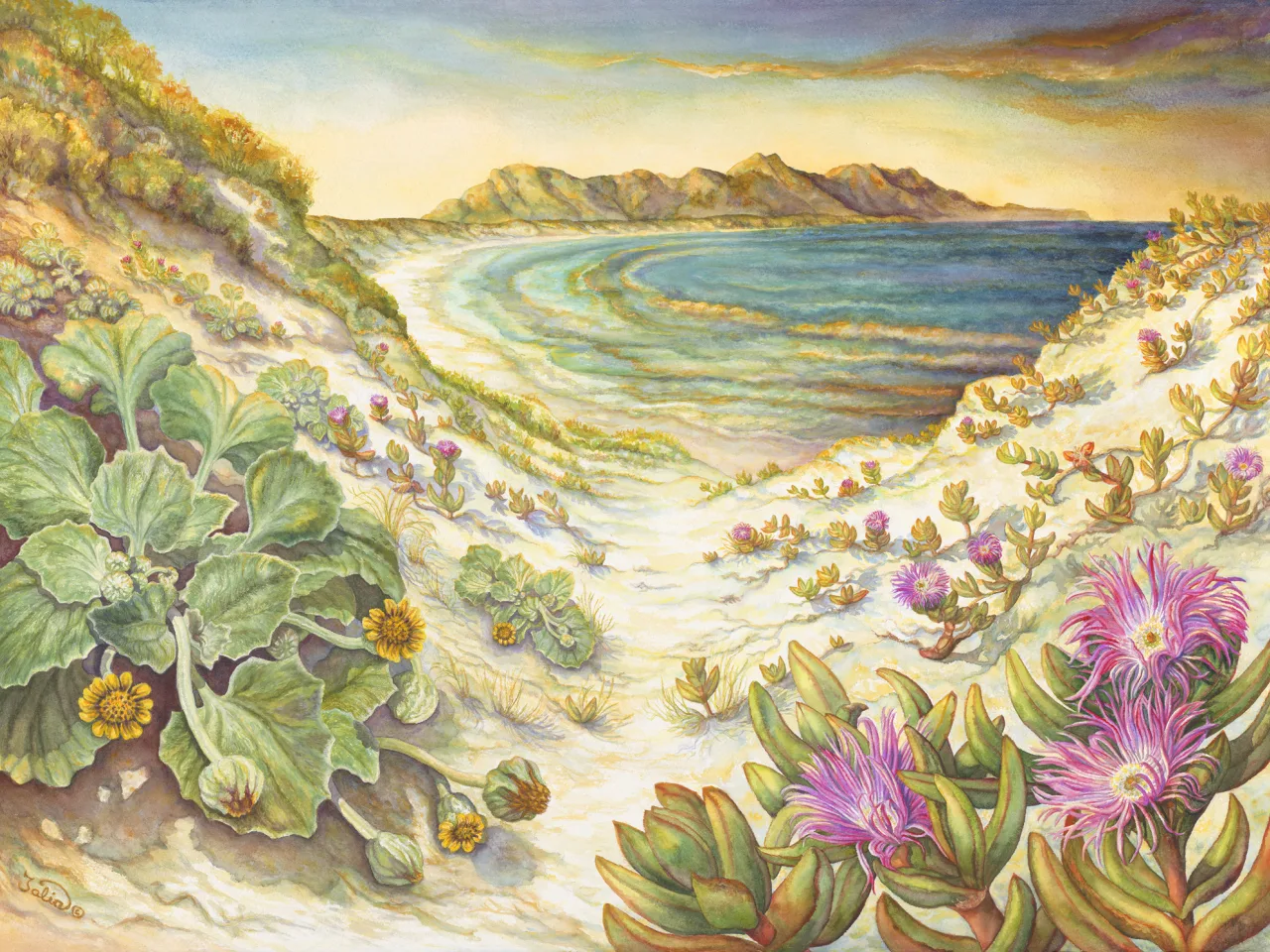Artwork 8 Fire-Fern and the Bushfire Moon
Section 7
"Fire-Ferns" of the North—Ancient Cycads of Northern Australia
Litchfield National Park, Northern Territory, Northern Territory
- 1. Cycas armstrongii (fire-fern)
Artwork 8
Buy a print
Limited edition giclee archival quality print on 310 gsm Ilford cotton rag (from an original work in watercolour on watercolour paper, 76 cm high x 56 cm wide)
from the artist
This painting is part of a pair celebrating the fire-adapted Cycas armstrongii in a landscape reflecting the subtle light shifts that accompany bushfires by day and by night. Both feature the same female cycad, from different perspectives.
Travels in the Northern Territory inspired these works.
On the outskirts of Litchfield National Park, in the Top End, a recently burnt area of bush attracted our attention. There was luxuriant new green growth on palm-like trees, accompanied by large central cones on some, and by a circular array of wizened orange-brown balls on others. They were cycads—ancient male and female plants displaying new leaves after seasonal fires—hence the local name “fire-ferns”. However, they are neither ferns nor palms, but plants whose ancestors first appeared in the fossil record about 300 million years ago (Hill et al., 1999).
Having observed many Top End fires after that first experience, as well as the aftermath some months later when many stages of new growth were displayed, I decided to paint a series of artworks to celebrate Cycas armstrongii, one of the remarkable “fire-ferns of the North”. This species is endemic to Australia, specifically to the northern parts of Western Australia and the Northern Territory, where there are annual seasonal fires.
Once, in the early 1990s, I drove for many hours in the Top End along the Victoria Highway, with bushfires burning on both sides of the highway, and mesmerised by a full Moon glowing orange-red—the “bushfire Moon”. Flickering in and out of red-glowing trees and shrubs, the mystic Moon accompanied us in our extended search for a fire-free place to camp for the night. This painting recreates the atmosphere of that night, with a female Cycas armstrongii emblazoning the night with its mature ovules ready to drop to the ground and start new life, and with upraised new leaves immortalising its survivability before and after fire, over 300 million years. Except for the birds, most of the dinosaurs came and went—but Cycas armstrongii lives on.
Many of the features of these cycads appear in the fossil record, and reflect how conditions on Earth—such as temperature, oxygen levels, and which animals were present—changed over hundreds of millions of years. Cycads evolved early and they reflect this in multiple ways, such as how they reproduce—with pollination assisted by some of the most primitive beetles alive today (Jones, 1993/2000).




